|
This is part 2 of a “Tale of Two Conventions”. The last blog focused on the Democratic Convention and this blog will focus on the Republican National Convention. Both conventions are over and the sprint to the November 3rd election has begun. After watching the two conventions I wondered whether the two parties were talking about the same America. The portrait of America painted by each candidate and their place in it, could not have been more different. It can best be described by that keen chronicler of the human condition Charles Dickens, “It was best of times, it was the worst of times, it was the age of wisdom, it was the age of foolishness, it was the epoch of belief, it was the epoch of incredulity, it was the season of light, it was the season of darkness, it was the spring of hope, it was the winter of despair, we had everything before us, we had nothing before us, we were all going direct to Heaven, we were all going direct the other way…..” The Republican National Committee (RNC) did not issue a new political platform for 2020 but adopted the 2016 platform, which enthusiastically throws its support behind President Trump and his policies. This pretty much confirms that the RNC is taking a backseat to the politics of Donald Trump. This is no longer the party of Ronald Reagan, and certainly not the party my father would recognize. The RNC provides the vehicle and the stage, but make no mistake, this is now the party of Donald Trump. The convention was produced and paid for by the RNC, but it was written and directed by Donald Trump. Republican National Convention: The convention took place on August 24-27. Due to the coronavirus pandemic, plans for an in-person, large scale convention were called off just a few weeks ago. The convention was originally scheduled to be held at the Spectrum Center in Charlotte, North Carolina, but was cancelled in early June due to strict public health guidelines. The location was then moved to Jacksonville, Florida, but was subsequently cancelled due to spikes in the coronavirus. The convention ended up taking place remotely from the Andrew W. Mellon Auditorium in Washington D.C. and a few other locations. The official business of the convention took place at the Charlotte Convention Center in North Carolina. The overall theme of the convention was “Honoring the Great American Story”. Going into the convention, Donald Trump trailed Joe Biden in the national polls by about 9 points. He has received poor marks for his handling of the coronavirus pandemic and his handling of racial injustice. If the president can change the narrative away from the coronavirus to crime and civil unrest, his polls should benefit coming out of the convention. Trump’s Goals for the Convention:
Highlights from Day One: The theme for the day was “Land of Promise”. With 336 delegates gathered in Charlotte, North Carolina, Mike Pence was unanimously nominated as Donald Trump’s running mate. During the roll call Donald Trump was officially named the Republican Party’s nominee for president. In contrast to the Democrat’s “Roll Call Across America”, the RNC roll call was a procession dominated by older white men in front of a white background emblazoned with #RNC2020. The president broke with tradition and appeared live at the convention center to give his acceptance speech. This was Donald’s party after all, and he made appearances all four days. The speech set the tone for the rest of the convention. The president painted a dark picture of what America would look like under a Biden administration; claimed his coronavirus efforts saved millions of lives; claimed that he resided over the most successful economy in the history of the country, and blasted mail-in-ballots. The president would appear two more times during day one in prerecorded videos from the White House. The first was a conversation with front line health care workers, and the second was an appearance with several former hostages whose releases had been negotiated by his administration. As was the case on all four nights, there was very little social distancing and no one wore a mask. Most of the speeches during the evening were delivered from the Andrew W. Mellon Auditorium in Washington, D.C. The speeches coalesced around four major themes: the president is not a racist; the president did a great job handling the coronavirus pandemic; the president created the greatest economy in the history of the country and can do it again; the Democratic Party will take the country down the path of socialism and allow our cities and suburbs to be overrun by mobs of rioting and looting criminals. The speakers of note included Jim Jordan, Herschel Walker, Mark and Patricia McCloskey, Kimberly Guilfoyle, Steve Scalise, Nikki Haley, Donald Trump Jr., and Tim Scott. The McCloskeys are a white couple who live in an exclusive suburb of St. Louis. They received a lot of national attention by pointing guns at passing Black Lives Matter protestors. They were vilified by the left and proclaimed heroes by the right for protecting their property. They made an appearance at the convention via video to warn America that if Joe Biden is elected president the suburbs will be become a lawless wasteland. Donald Trump Jr. and his girlfriend Kimberly Guilfoyle both gave angry speeches along the same lines. Donald Trump Jr. said that “Beijing Biden” would cozy up to China, bring in more illegals, repeal the tax cuts, and allow anarchists to flood the streets. Guilfoyle was even more strident in her condemnation of Biden. It was an over the top performance during which she warned that democrats “want to enslave you to the weak, dependent, liberal victim ideology, to the point that you will not recognize this country or yourself.” Donald Trump later called Guilfoyle to tell her it was the best speech that he had ever heard. You decide: https://www.youtube.com/watch?v=ErSd_YiRCAs . Nikki Haley, a former South Carolina governor and President Trump’s first UN ambassador, came across as poised and professional. Being a woman of Indian descent, she pushed back against the claim that Donald Trump is racist. She even said that “America is not a racist country.” This defied logic, but the convention was all about defying logic. It was obvious to anyone paying attention that Nikki’s speech was little more than a kickoff to a 2024 presidential run. Probably the best speech of the night was given live by Senator Tim Scott of South Carolina. Scott is the only black Republican Senator and was a pleasant reprieve from the anger and doom and gloom heard all night. He used his own story to show how much racial progress the country has made. In the best line of the night Scott said, “Our family went from cotton to Congress in one lifetime.” Scott also pushed the case for school choice and warned against the democrats who would turn our country into a socialist utopia. Conspicuously absent from the convention was the last GOP president George W. Bush, and Senator Mitt Romney who ran against Obama in 2012. Highlights from Day Two: The theme for the day was “Land of Opportunity”. The White House played a prominent role as a backdrop for many of today’s proceedings. The day was full of Trump family members and the controversy over whether or not the Hatch Act had been violated. The Hatch Act prohibits federal employees from engaging in most political activity inside federal buildings or while on duty. The president and vice president are exempt from the civil provisions of the Hatch Act, but federal employees are not. Federal employees who helped stage certain political events witnessed on this day may be in violation. The following convention events may have violated the Hatch Act:
President Trump’s economic advisor Larry Kudlow led off the prime-time speeches, giving the president credit for the greatest economy in history. We have heard this claim often and it is simply not true. It all depends on how you measure the economy. GDP growth is a common measure, and there have been several instances in the post WWII era (including during the Obama administration) when GDP growth was higher than during the Trump administration. True, the stock market achieved record highs during Trump’s term. But the stock market is not the economy, and 80% of stocks are owned by the 10% richest households in America. Cissie Graham, the granddaughter of Billy Graham, and Abby Johnson, a former Planned Parenthood employee gave voice to Donald Trump’s pro-life stance. Johnson claimed that Donald Trump was the most pro-life president ever. I guess that Ms. Johnson had forgotten that Trump was pro-choice before he decided to enter politics. Nicholas Sandmann delivered a very effective anti-media message from the Lincoln Memorial. Sandmann was a high school student falsely portrayed as the aggressor during a confrontation with a Native American activist last year during demonstrations near the Lincoln Memorial. Sandmann was wearing a “Make America Great Again” hat and was vilified on social media and in many main-stream news outlets. As a result, Sandmann and his fellow high school students received death threats, and their conservative High School received various threats of violence. After an investigation cleared the students, they filed defamation lawsuits against several news outlets. Several of the lawsuits are still pending, but the students have won multi- million dollar judgements against The Washington Post and CNN. The other notable speeches of the evening were given by Trump’s children Tiffany and Eric, and the first lady Melania Trump. It was interesting that neither Tiffany nor Eric (and Donald Jr. for that matter), attempted to the portray the president as a kind and loving father, or attempt to humanize him in any way. Tiffany used her speech to rail against the main-street media. Eric expounded on his father’s accomplishments and the dangers of a Biden presidency. Eric stated that “Biden has pledged to defund the police and take away our cherished Second Amendment”. This is a false claim. Melania Trump’s speech was notable for taking place live from the White House Rose Garden, which had recently been renovated for the occasion. To her credit, the first lady expressed thanks to the front-line workers who have risked their lives during the pandemic, and offered sympathy for those grieving the loss of loved ones to COVID-19. The speech came across as Melania’s reintroduction to the American people. Unlike the speeches of Jill Biden and other Biden family members, there was little attempt to soften Donald Trump the man, or to humanize him in any way. Highlights from Day Three: The theme for the day was “Land of Heroes”. Most of the speeches for day 3 were delivered form the Andrew W. Mellon Auditorium in Washington D.C. The night was capped off with a live speech by Vice President Pence delivered from Fort McHenry in Baltimore. There were lots of America flags present during every speech and the backdrop of Pence’s speech was a nod to the military and patriotism. Women’s suffrage was celebrated, and there was an effort to portray President Trump as a champion of women. Many women spoke in praise of Trump, including his daughter-in-law Lara Trump, Kelly Ann Conway, Kayleigh McEnany, Kristi Noem, Marsha Blackburn, Elise Stefanic, Joni Ernst, and Karen Pence. The women provided a softer tone than the previous days, but there was still the steady beat of doom and lawlessness under Democratic leadership. There was also the appeal to social conservatives with a clear pro-life message. The message was effectively delivered by Sister Didi Burn, who was a military physician before becoming a nun. She made a passionate plea for the dignity of all life, particularly the unborn. But she lost me when she claimed that Donald Trump was the most pro-life president, in all stages of life. I guess the Sister hadn’t received the memo on Trump’s prior pro-choice stance and his support of the death penalty. Madison Cawthorne delivered some of the most rational lines of the night. Cawthorne is the young Republican nominee in North Carolina’s 11th District. He urged politicians to do more listening and less talking. “To liberals I say, let’s have a conversation”, he said, and “to conservatives, let’s define what we support and win the argument in areas like healthcare and the environment.” Cawthorne is confined to a wheelchair as a result of an auto accident and finished his speech by rising to his feet with the aid of a walker. This young man is going places. The best speech of the night was delivered by Mike Pence, surrounded by American flags in front of a live audience. The backdrop of Fort McHenry was quite impressive. Pence gave an articulate rendering of the triumphs of the Trump administration and came across as the loyal and stoic number two. Pence was fairly moderate in his remarks but threw plenty of red meat to the base. According to Pence, we won’t be safe in Joe Biden’s America. "Biden is a cheerleader for communist China and a Trojan Horse for the radical left". It was a well delivered speech, written with rose-colored glasses, and absent any sense of what was really happening on the streets of America. You would never know that most pro sports weren’t taking place due to player boycotts and racial protests were intensifying due to new police shootings. At the end of the speech Pence was greeted on-stage by President Trump. You didn’t think the president could let Pence have all the lime-light? If there was any social distancing taking place, it all vanished when the audience rushed the fence-line to get closer to Trump and Pence. There were no face masks to be seen in this crowd. It certainly fit the narrative of the entire convention, that the pandemic was in the rear-view mirror. Highlights from Day Four: The theme of the final day of the Republican convention was “Land of Greatness”. All the speeches and film clips were a leadup to the day’s main event, President Trump’s speech. We heard from some of the president’s most ardent supporters, most of whom where men. These included Mitch McConnel, Dana White (President of UFC), Ben Carson, Rudy Giuliani, Tom Cotton, and several others. The tough on crime theme permeated the speeches, punctuated with a little criminal justice reform. The president’s daughter Ivanka delivered a speech live from the South Lawn of the White House. The speech was billed as the introductory speech for Donald Trump. But it was more like a checklist of Ivanka’s accomplishments and a rationalization of why her advisory position as first daughter should be elevated to a cabinet position. The president’s 70-minute speech was delivered live in front of 1,500 people on the South Lawn of the White House. It was an impressive scene, with the White House behind the president and the Washington Monument in the distance. I just hope that those 1,500 spectators got tested for the coronavirus after the speech. There was no social distancing and I could count on one hand the number of people wearing masks. Periodic shouts of “four more years” didn’t help matters. It had all the makings of a “super spreader” event. But the president got his live audience and the use of the White House as a prop for his reelection bid. The administration later claimed that the Hatch Act was not violated because the South Lawn was not inside a federal building. True, but campaign signs were everywhere and the “People’s House” was clearly used as a prop in a campaign rally. If not technically illegal, it certainly broke with tradition and blurred the lines between politics and government. The speech was too long and came across as a “State of the Union” speech. The speech was more notable for what it didn’t say than what it did say. There was no positive vision for the future, no real agenda for the second term, and little mention of how to tackle the coronavirus, get the economy back on track, or address the social injustices rocking the country. The speech was a laundry list of the president’s accomplishments and a summation of the things we had heard all week about why the country should fear Joe Biden and the radical left. The speech was delivered without much passion and the president’s energy level was low. I wonder if the speech was written by Kelly Ann Conway because it could have been titled “Alternative Facts”. The president tried to hammer home his administration’s successful efforts at combating COVID-19. According to the president “We developed, from scratch, the largest and most advanced testing system in the world”. He made the claim that the US “has among the lowest case fatality rates of any major country in the world”, and the US “has developed a wide array of effective treatments”. But even more startling was the statement that his administration focuses “on the science, the facts and the data” to handle the coronavirus pandemic. “If we listened to Joe, hundreds of thousands more Americans would have died”. You get the point. The president accused the democrats of rewriting history, but the speech tried to do exactly that. The president’s speech kept the fact checkers busy all night with his claims about the economy, “massively lowering drug costs”, pushing healthcare premiums “way down”, passing the Veterans Choice bill, and others. But my favorite claim of the night was the assertion by the president that he had done more for the African American community than any other president since Lincoln. I know that it’s difficult when you don’t know what you don’t know. I guess the president forgot (or didn’t know) about the 1964 Civil Rights Act and the 1965 Voting Rights Act signed into law by Lyndon Johnson. If Joe Biden could do everything that Trump claimed, he would not be our next president, he would be our first king! Here’s just a few of the things that Biden would do as president: He would eliminate borders, remove charter schools, take away your guns, eliminate the suburbs, release 400,000 criminals onto the streets, destroy American jobs and American greatness. Scary stuff! The president looked relieved when the speech was finally over; I know I was. Not to be outshined by her husband, Melania Trump wore a bright lime green dress. It was hard to miss her in the crowd and got her a lot of attention at the convention and on the internet. That green dress provided a perfect green-screen for memes and Photoshop shenanigans. She walked right into that one, but she is the fashion expert afterall. he best part of the night was the spectacular fireworks display over the national mall which illuminated the Washington Monument and Lincoln Memorial. You just had to know that the Republican’s fireworks display would dwarf that of the Democrats. Did Trump Achieve his Convention Goals?
Final thought: On Thursday of this week Donald Trump called on North Carolina voters to vote twice. Once by mail and once in person, to test the system. Why not make it simpler Mr. President, just bring in the Russians as poll monitors. If you enjoy reading this type of commentary please subscribe to my blog and tell a friend. You will receive an email notification when new blogs are posted. The email will come from the site’s email: [email protected]. Thanks, Armchair American
0 Comments
The Democratic and Republican Presidential Conventions are now over and the sprint to the November 3rd election begins. As painful as it was, I watched all four nights of each convention and have some opinions on what I saw. With the country still in the throes of the coronavirus pandemic, it was the best opportunity for each candidate to make their pitch to a mass audience. Watching the conventions one after the other had me wondering whether the two parties were talking about the same America. The portrait of America painted by each candidate and their place in it, could not have been more different. It can best be described by that keen chronicler of the human condition Charles Dickens, “It was best of times, it was the worst of times, it was the age of wisdom, it was the age of foolishness, it was the epoch of belief, it was the epoch of incredulity, it was the season of light, it was the season of darkness, it was the spring of hope, it was the winter of despair, we had everything before us, we had nothing before us, we were all going direct to Heaven, we were all going direct the other way…..” The firework displays have ended and the fact checks have all been made. Now we will take a look at the value of conventions, the highlights from the eight nights, and examine whether or not each candidate accomplished what they set out to achieve. Since 1832 every major political party has held a national convention to nominate its presidential candidate. Primary elections did not exist until the 20th century, so the main purpose of the convention was to select the party’s candidate for president. FDR was the first president to accept the nomination in person at the 1932 Democratic Convention. It wasn’t until 1972 that primary elections determined who each party’s candidate for president would be. Today, the conventions are mainly celebratory events and the nomination of the party’s candidate for president is a mere formality. Party business is conducted during the convention, but what the public sees on TV is a celebration of the party faithful and a major promotion of the nominee. Due to coronavirus pandemic, both conventions were delayed by about one month and for the most part they were conducted remotely. This race is going to be a lot closer than the polls and talking heads currently predict. Biden should comfortably win the popular vote, but I think the Electoral College will determine who the next president will be. Therefore, the swing states of Florida, Michigan, Pennsylvania, and Wisconsin will be receiving a lot of attention by the candidates. Even before the conventions, most voters had already decided who they will vote for in November. About 13% of the voters are still up for grabs, and it is this group that the candidates will hope to sway through their convention messaging. This post will focus on the Democratic Convention and the next on the Republican Convention. Democratic National Convention: The convention took place on August 17-20, and officially took place at the Wisconsin Center in Milwaukee. While the convention was choreographed from Milwaukee, it was mostly held remotely from various venues across the country. Joe Biden and Kamala Harris gave their acceptance speeches remotely from the Chase Center in Wilmington, Delaware. The overall theme for the convention was “Uniting America”. Biden’s Goals for the Convention:
So began four days of personalizing Joe Biden and slamming Donald Trump for his response to the coronavirus pandemic and his divisive policies. A major objective of the first day of the convention was to unify the party. All of the major candidates who had run against Biden in the primaries were featured. Bernie Sanders gave a forceful endorsement of Biden and urged his supporters to rally behind Biden to “remove the most dangerous president in history”. Several Republicans spoke in favor of Joe Biden, most notably former Ohio Governor John Kasich who said that Donald Trump had betrayed the principles of the Republican Party. Kristin Urquiza gave a moving tribute to her father Mark, who had died from COVID-19. Her father was a Trump supporter who had listened to the president downplay the virus. In one of the best lines of the night, Kristin said of her father, “His only preexisting condition was trusting Donald Trump, and for that he paid with his life”. The best speech of the night was delivered by Michelle Obama who gave a scathing assessment of Donald Trump. She said that rather than providing steadiness, the president only delivered chaos, division, and a total and utter lack of empathy. She continued, “Donald Trump is the wrong president for our country. He has had more than enough time to prove that he can do the job, but he is clearly in over his head. He cannot meet this moment. He simply cannot be who we need him to be for us. It is what it is.” Highlights from Day Two: The program was emceed by actress Tracee Ellis Ross and the theme was “Leadership Matters”. Joe Biden was nominated by Jacquelyn Asbie, a security guard who Biden had met in an elevator. It was a nice touch highlighting Biden’s connection with regular people and his common decency. Acording to Asbie, “In the short time that I spent time with Joe Biden, I could tell he really saw me, that he really cared, that my life meant something to him”. The nomination was seconded by Delaware Senator Chris Coons and Rep. Lisa Blunt Rochester. The highlight of the evening for me was the “Roll Call Across America”. The prerecorded roll call took us to all 57 states and territories as we watched each officially cast their votes to nominate Joe Biden. It was a visual journey across the country showcasing the nation’s geographic diversity, natural beauty, historic sites, cultural traditions, and its people. Featured speakers included Jimmy and Rosalynn Carter, Bill Clinton, Caroline Kennedy, Alexandria Ocasio-Cortez, John Kerry, Chuck Schumer, Colin Powell and Jill Biden. A few notable lines from Clinton’s speech were: “Joe helped bring us back from a recession before and he can do it again”, and “Trump would blame, bully and belittle, and Biden would build back better”. Former Secretary of State Colin Powell, a republican, further bolstered Biden’s bipartisan credentials and his leadership capabilities. According to Powell, “On day one Joe Biden will restore American leadership”. A film narrated by Cindy McCain showed the friendship between her husband, the late GOP Senator John McCain, and Joe Biden. The film highlighted Biden’s humanity and his ability to work across the aisle. The final speaker of the night was Biden’s wife Jill. She gave her speech live from a classroom at Brandywine High School in Wilmington, Delaware where she taught English in the 1990s. She took us through Joe’s life and the tragedies which shaped him. It was a passionate and personal account of Joe Biden that many have not seen. According to Jill, “Joe knows how to make a broken nation whole, because he has done the same in his own life through several tragedies”. It was a warm and effective speech. Highlights from Day Three: The program was emceed by actress Kerry Washington and the theme was “A More Perfect Union” (Sub-Themes: “A More Perfect Society” and “A More Perfect Economy”). Kamala Harris was nominated as Vice President which she formally accepted. Of the many speakers on this day the most notable were Gabby Giffords, Hillary Clinton, Nancy Pelosi, Elizabeth Warren, and Barack Obama. Gabby Giffords, the former Arizona Representative, was severely injured when she was shot several times in 2011. She gave a brave and powerful address on her struggles to recover from her injuries and on her ongoing fight against gun violence. Hillary Clinton urged everyone to vote and to convince everyone you know to vote for Joe Biden. “We need numbers so overwhelming Trump can’t sneak or steal his way to victory. Vote like our lives and livelihoods are on the line, because they are”. Barack Obama made perhaps the best speech of the convention. It was the most passionate that I have ever seen him. His condemnation of Trump was blistering and downright visceral. Some of the highlights from the speech include: “Donald Trump hasn’t grown into the job because he can’t”. “This administration has shown that it will tear our democracy down if that’s what it takes to win”. “He’s shown no interest in putting in the work; no interest in finding common ground; no interest in using the awesome power of his office to help anyone but himself and his friends; no interest in treating the presidency as anything but one more reality show that he can use to get the attention he craves”. Phew! Take that Donald. Kamala Harris formerly accepted the nomination for Vice President and gave her acceptance speech live from the Chase Center in Wilmington, Delaware. In one notable line she said, “There is no vaccine for racism. We have got to do the work”. After her speech she was greeted onstage by her husband Douglas Emhoff and Joe and Jill Biden. Highlights from Day Four: The program was emceed by actress Julia Louis-Dreyfus and the theme was “America’s Promise”. I thought that Louis-Dreyfus’ attempts at comedy mostly missed the mark, and seemed out of place. This was another night to beat up on Trump and to show the empathetic and generous side of Joe Biden. Of the many speakers, the most notable were Andrew Young, Cory Booker, Pete Buttigieg, Michael Bloomberg, Ashley Biden, Hunter Biden, Ed Good, Brayden Harrington and Joe Biden. A tribute video to Biden’s son Beau was very moving, but I thought a little overdone and unnecessary. A video of Joe Biden’s granddaughters discussing their grandfather was very effective. The final video sequence of the evening leading up to Joe Biden’s acceptance speech was from Stephen Curry and his young family. It was odd, out of place, and left me scratching my head. Some of the most memorable moments of the evening included remarks from Ed Good, a 95-year-old veteran of WWII and Korea. He is former Trump voter and member of the NRA and said, “I think Trump has been the worst president we’ve ever had, so I’ll be glad to see him go”. Michael Bloomberg delivered the most scathing critique of Donald Trump. Said Bloomberg, “When confronted with the biggest calamity any president has faced in the modern era, Donald Trump spent the year downplaying the threat, ignoring science, and recommending quack cures, which let COVID-19 spread much faster than it should’ve, leaving hundreds of thousands needlessly sick or dead. He has failed the American people catastrophically”. He finished by saying “I’m not asking you to vote against Trump because he’s a bad guy. I’m urging you to vote against him because he’s done a bad job”. One of the most poignant talks came from 13 -year-old Brayden Harrington. Brayden stutters, an affliction that Joe Biden has overcome. They met during the primaries and Biden had related to him about his own struggles. Biden shared with Brayden some strategies on how he might overcome his stutter. According to Brayden, “I’m just a regular kid, and in a short amount of time, Joe Biden made me more confident about something that’s bothered me my whole life. Joe Biden cared”. Brayden showed incredible courage to share his story with a national audience, and it really highlighted the character of Joe Biden. Joe Biden delivered his acceptance speech live from the Chase Center in Wilmington, Delaware. The speech highlighted Donald Trump’s shortcomings but never mentioned him by name. He noted that “Character is on the ballot. Compassion is on the ballot. Decency, science, democracy. They are on the ballot”. Biden outlined his vision for America without getting too specific. He portrayed himself as the best candidate to combat overlapping economic and healthcare crises, and promised to “draw on the best of us, not the worst and be an ally of the light, not the darkness”. It was not an Obama speech, but it was delivered with energy, it was coherent, thoughtful, and generally upbeat. Therefore it was a success. After the speech Joe Biden was joined onstage by his wife Jill and Kamala Harris and her husband, all wearing face masks. The evening and the convention ended with a firework display outside of the Chase Center. They were joined by a number of people outside of the center, who had been invited to watch the festivities from the comfort of their own vehicles. Did Biden Achieve his Convention Goals?
Overall, I thought that the Democrats used the virtual format to their advantage. It allowed for a variety of voices to be heard. I particularly liked hearing from ordinary Americans rather than from convention delegates hyped up on free booze, carbs and groupthink. The combination of prerecorded videos, music, and speeches worked well. I didn’t like the fact that the emcess were Hollywood actresses. It took away from the message and the Democrats missed a great opportunity to feature some up and coming stars in their own ranks. I also didn’t like all the attention showered on Beau Biden. It came across as a canonization. I feel sorry for Biden’s other kids who have to live in the shadow of St. Beau. I get that Biden has experienced and overcome hardships in his life, but this was overdone. Now it is time for the Biden campaign to kick it into high gear, get out on the road, and counter the alternative facts coming out of the Republican convention. I will devote the next post to the Republican Convention. If you enjoy reading this type of commentary please subscribe to my blog and tell a friend. You will receive an email notification when new blogs are posted. The email will come from the site’s email: [email protected]. Thanks, Armchair American QAnon is a story that involves the dark web, secret cabals, cryptic messages, biblical prophecies, digital warriors, diabolical villains, conspiracy theories, and presidential politics. Some have called QAnon a cult, a political movement, a burgeoning new religion, and the conspiracy theory du jour. In some respects, it could be any, or all of those things. Or it could be a fantastical experiment of mass manipulation by a rogue social scientist, or rogue state. So, what is it and why should we care? QAnon has induced acts of violence and made its way into national politics, and therefore it warrants our attention. What is QAnon: An “anon” is a person posting on the internet anonymously. “Q” is an unknown person or persons who claims to have a Top Secret “Q clearance” in the government. We first heard from the anonymous Q with a cryptic post on October 28, 2017 on a forum thread called “Calm Before the Storm”, on the website “4chan”. 4chan lives on the fringes of the internet where anonymity rules, and conspiracy theories and illicit activities run rampant. The QAnon conspiracy theory appears to have morphed out of several other “anon” postings, such as “FBIAnon”, “CIAAnon”, “WH Insider Anon”, and “High Level Insider Anon”. These posters were all pro-Trump, and perpetrated many false claims and derogatory comments about Hillary Clinton in the runup to the 2016 presidential election. During October 2016, websites such as 4chan helped to spread the conspiracy theory known as “Pizzagate”. In case you have forgotten about this little piece of hilarity, it was a far-right theory that Hillary Clinton was running a child sex ring out of the basement of a pizzeria called Comet Ping Pong. This theory got a lot of buzz on the far reaches of the internet and has never gone away. The QAnon theory contends that a secret shadow government, known as the “deep state”, is controlled by Hillary Clinton, Barack Obama, George Soros, and a cabal of global liberal elites. According to the theory, the deep state runs a global child sex trafficking ring, and practices satanism, cannibalism and other evils. Sound plausible? In the QAnon theory, Donald Trump is a lone heroic warrior, elected to defeat the deep state. It is up to the mysterious Q to tell the world about Trump’s top-secret war against the deep state, and to rally support behind the president. The eventual destruction of the global cabal can only be accomplished with the support of patriots who search for meaning in Q’s clues (Q Drops). Q has posted over 2000 times to the image boards of 4chan, 8chan, and 8kun. 8 chan was shut down for promoting violence and misinformation, and now most of Q’s posts appear on the website 8kun. Investigative journalists from NBC News dug into the origins of Q and QAnon. (https://www.nbcnews.com/tech/tech-news/how-three-conspiracy-theorists-took-q-sparked-qanon-n900531). The investigation determined that three people took the original Q post and expanded it across multiple platforms to build internet followings for profit. This seems to me to be the most likely scenario. The three individuals involved deny this, and the identity of the original Q remains a mystery. QAnon Philosophy: QAnon rejects mainstream institutions, ignores government officials (they are corrupt), despises mainstream media for spreading “Fake News”, and champions unfettered free speech on the internet. Some of Q’s favorite topics include God, Pizzagate, the wickedness of the elite, the mass hysteria over the coronavirus (promoted by the Democrats to dethrone President Trump), and Dr. Fauci (a deep state puppet). The rallying cry for QAnon followers is “WWG1WGA” (where we go one, we go all). It’s an expression of solidarity which celebrates unity and patriotism. Other favorite Q themes that followers have rallied around include:
QAnon followers are not a simple homogeneous group, and the motives of its adherents are divergent. The many twists and turns to the theory have appeal to many, particularly conspiracy theorists. But most followers are clearly right-wing and pro Trump. One major group of followers focuses on the religious aspects of QAnon. In the language of evangelical Christians, Q quotes bible verses and promotes the Great Awakening. The other major group of followers clings to the notion of the deep state, with Q being a government insider helping Trump to defeat it. They see significance in words beginning with the letter Q spoken or tweeted by Donald Trump. According to Jared Holt, a researcher for Right Wing Watch, the QAnon theory “provides Trump’s most fervent supporters a way to explain away any scandal or slip-up the president may face”. Even typo filled tweets and incoherent rambles are viewed as proofs that the president is in on the conspiracy. It solidifies a portion of Trump’s base that will not be swayed by anything that he says or does. QAnon Goes Mainstream: Q may be anonymous, but the QAnon movement certainly isn’t. In a few short years QAnon has grown from a few fringe chat rooms and message boards to nearly every major social media and commercial platform on the internet. It encompasses a massive international universe of blogs, proprietary websites, podcasts, and all the mainstream social media platforms, including Redditt, Twitter, YouTube, Instagram, TikTok and Facebook. According to an investigation conducted by NBC News, Facebook has been key to QAnon’s growth, mainly through its “Groups” feature. A recent internal Facebook investigation has uncovered thousands of groups and pages, with millions of members and followers that support QAnon. (https://www.nbcnews.com/tech/tech-news/qanon-groups-have-millions-members-facebook-documents-show-n1236317). QAnon is not just active in the United States. According to an investigation by the Guardian, there are active groups of QAnon followers all over Europe, Australia, South America, Canada, Mexico, and several of the former Soviet bloc countries. (https://www.theguardian.com/us-news/2020/aug/11/qanon-facebook-groups-growing-conspiracy-theory). Along with the massive social media presence, entrepreneurs are cashing in on the QAnon movement. Many are generating revenue from their podcasts, YouTube channels, apps, books, newsletters, and social media platforms dedicated to QAnon. There are others selling millions of dollars worth of Q and QAnon branded merchandise online and at right-wing campaign rallies. Just Google “QAnon merchandise” and you’ll find your pick of hats, T-shirts, belt buckles, coffee mugs, buttons, stickers, and baby bibs! QAnon gets a Political Endorsement: August 19, 2020 will hold a special place on the QAnon calendar going forward. President Trump has occasionally retweeted posts from QAnon affiliated accounts, but this is the first time that he directly responded to questions about QAnon. At a news conference, the president was asked about the QAnon movement, to which he responded, “I don’t know much about the movement, other than I understand they like me very much; which I appreciate.” He went on to say that “I heard these are people who love our country.” When told by the reporter the basic premise behind the QAnon theory, the president responded by asking “Is that supposed to be a bad thing or a good thing? If I can help save the world from problems, I’m willing to do it. I’m willing to put myself out there. And we are actually saving the world…” As you can well image, within minutes QAnon affiliated social media accounts across the world came to life to celebrate Trump’s comments as validation of their views. (https://apnews.com/535e145ee67dd757660157be39d05d3f). QAnon supporters have been showing up at Trump rallies since 2018. But only in recent months has their political influence been felt. According to Brian Dunning of the “Skeptoid Podcast”, at least 60 candidates running for Congress had expressed their belief that QAnon is real. Last week QAnon adherent and self-described Islamophobe Laura Loomer, won the GOP nomination for Florida’s 21st Congressional District. Earlier this month Marjorie Taylor Green won the GOP nomination for Georgia’s 14th Congressional District. Ms. Green is a vocal supporter of QAnon and has racist views condemned by many mainstream Republicans. (https://www.washingtonpost.com/politics/2020/08/11/marjorie-taylor-greene-georgia-qanon/ ). Both women received praise and congratulations for their victories by President Trump. As the politics of QAnon goes mainstream, there are thousands of digital soldiers behind the scenes using social media and fringe message boards to wage information warfare. They are intent on influencing the 2020 elections to keep Donald Trump in power. How many of these QAnon social media accounts do you think are run by trolls controlled by the Russian government? Many I would suspect. The Darkside: Yahoo News disclosed the existence of an FBI intelligence bulletin, dated May 30, 2019, which described conspiracy theory-driven domestic extremists as a growing threat. (https://news.yahoo.com/fbi-documents-conspiracy-theories-terrorism-160000507.html). One of the prominent conspiracy theories mentioned in the bulletin was QAnon. The bulletin warns that these conspiracy theories may very likely motivate some domestic extremists to engage in criminal or violent behavior. So, what landed QAnon on the FBI domestic terrorism bulletin? The FBI cited a number of arrests related to QAnon in which death threats and acts of violence were involved. These included an armed stand off between Matthew Phillip Wright and police at the Hoover Dam, and the murder of mob boss Frank Cali at the hands of a QAnon follower. Several social media platforms have been pushing back against QAnon affiliated groups since 2018. Reddit banned several QAnon groups from its platform in 2018 for inciting violence, harassment, and the dissemination of personal information. In July of this year Apple pulled the very popular app “QDrops” from the App Store after it learned more about the conspiracy theory. On July 21, 2020 Twitter announced that it was banning over 7,000 QAnon accounts for breaking its rules around platform manipulation, misinformation and harassment. This is the strongest action yet against QAnon, and Twitter stated that it would no longer recommend QAnon accounts and content, stop such content from appearing in trends and search, and would block QAnon internet links. (https://www.nbcnews.com/tech/tech-news/qanon-groups-have-millions-members-facebook-documents-show-n1236317). In July TikTok disabled the two most popular QAnon hashtags on its platform. But Facebook is the elephant in the room when it comes to the spread of QAnon. It removed a few accounts and groups in May for “suspected coordinated inauthentic behavior” ahead of the 2020 presidential election. This week Facebook announced that it will restrict QAnon (and other right-wing groups) and will no longer recommend that users join groups supporting it. Short of an outright ban, Facebook said it will only remove groups and accounts outright if they discuss potential violence. Facebook said it is not banning QAnon because the group does not meet rigorous criteria for the platform to designate it a “dangerous organization.” But it is expanding this policy to address the movement because it has “demonstrated significant risks to public safety.” (https://www.latimes.com/world-nation/story/2020-08-19/facebook-bans-some-but-not-all-qanon-groups-accounts ). So for now, QAnon will continue to proliferate on Facebook and Instagram (owned by Facebook). As one account is shut down others pop up somewhere else on the internet, and this is the key to its growth. There is a lot more to the QAnon story. Who is this mysterious Q character? How did the QAnon conspiracy theory explode in just a few short years? Who believes in this stuff and why? Most importantly, why doesn’t President Trump distance himself from QAnon, and how much influence will it really have on the upcoming election? From its humble beginnings as a scheme to garner internet traffic, millions of like-minded people have found a rallying point in QAnon.
For a deep dive into the origins of QAnon and who the mysterious Q may be, I refer you to articles referenced above by the NBC News investigative team and the article from The Atlantic. If you enjoy reading this type of commentary please subscribe to my blog and tell a friend. You will receive an email notification when new blogs are posted. The email will come from the site’s email: [email protected]. Thanks, Armchair American Public Health Should be Above Politics. Was a Line Crossed in Favor of Black Lives Matter Protests?8/15/2020 As was established in the last blog post, public health authorities have broad powers under the constitution to restrict individual liberty to combat a health crisis. However, these restrictions must be applied fairly, without prejudice to content or viewpoint. Black Lives Matter protests have been taking place across the country for over two months, in apparent violation of social distancing and public gathering restrictions. Have the public health authorities crossed the “neutral” line? In the wake of the George Floyd killing by Minneapolis police, demonstrations against police brutality have erupted across the country. Black Lives Matter protests took place in cities large and small. This became real to me when protests shut down Highway 101 running through the middle of Santa Rosa, on the evening of June 5. Unable to make it home on the 101, I took an alternative route through the city’s downtown. I soon ran into the middle of a group of people marching through the city chanting “Black Lives Matter”. The protest was peaceful and I never felt threatened. Several nights of protests followed in the downtown area. Some looting and vandalism did occur late at night, long after most of the peaceful protestors had left. All this got me thinking “what about the public health orders put in place to stop the spread of the coronavirus”? There were orders in place to restrict outdoor gatherings to 100 attendees, as well as social distancing and face covering requirements. I reached out to city and county officials for answers, but never received any. My city was not alone. Major protests and marches were taking place in Milwaukee, New York, Washington DC, Seattle, Denver, Portland, San Francisco, Los Angeles, Philadelphia, and in hundreds of cities across our country. COVID-19 was no longer public health enemy number one. It had been replaced by police brutality and systemic racism. Many public officials took part in the protests, including the mayors of Minneapolis and Washington DC, chiefs of police, including the one in my city, and the Governor of New Jersey Phil Murphy. But most of these protests were taking place in cities which restricted public gatherings to 50-100 people. Social distancing and facial covering mandates were in place as well. This is why shouts of “liberal hypocrisy” started to be heard (https://www.politico.com/news/2020/06/06/conservatives-charge-liberals-with-social-distancing-hypocrisy-304435). Opponents of New Jersey Governor Murphy claimed that he was violating his own executive order by picking winners and losers by blurring the line between protests “worthy of participation and those deserving prosecution”(https://www.fox5ny.com/news/nj-governor-questioned-about-attending-rallies-during-stay-at-home-order Apparently not all protests are created equal. Conservatives have pointed out that lockdown protests during April and May were prohibited by public health officials because they violated social distancing and public gathering restrictions. But the protests against police brutality, which began in late May, appear to be condoned by the public health community. Even though these recent protests have occurred as many cities began lifting stay-at-home restrictions, and many of the protestors wore face coverings, there is much evidence in support of the conservative view. A national group of 1,288 health professionals signed the “Open letter advocating for an anti-racist public health response to demonstrations against systemic injustice occurring during the COVID-19 pandemic”. The open letter (https://drive.google.com/file/d/1Jyfn4Wd2i6bRi12ePghMHtX3ys1b7K1A/view) states “white supremacy is a lethal public health issue”, and “in addressing demonstrations against white supremacy, our first statement must be one of unwavering support for those who would dismantle, support, or reform racist institutions”. The open letter further states that “as public health advocates, we do not condemn these gatherings as risky for COVID-19 transmission. We support them as vital to the national public health and to the threatened health specifically of Black people in the United States”. The open letter also spells out why the Black Lives Matter protests are different than the earlier protests against stay-at-home orders. The American Public Health Association declared systemic racism a public health crisis at the beginning of June. Soon after, Colorado, Wisconsin and Michigan, along with cities in several other states, have declared systemic racism to be a public health emergency or crisis (https://www.apha.org/topics-and-issues/health-equity/racism-and-health/racism-declarations). One of the key justifications for these declarations is that COVID-19 has affected communities of color at a disproportionate rate. I think that the public health community is justified in shining a light on systemic racism. It has clearly led to many inequities in our society, particularly in areas of housing, education and health outcomes. According to recent polls, most Americans support the views of the Black Lives Matter protests (https://news.gallup.com/poll/316106/two-three-americans-support-racial-justice-protests.aspx).
But, is there legal justification to favor one form of protest over another? Probably not. But that’s for the courts to decide. Even though public health officials have broad constitutional powers during health emergencies, there are limits. Consider this: people are shot and killed on a daily basis in several of our major cities, namely Detroit and Chicago. Why not just declare public health emergencies in these cities and ban guns outright? Gun violence is clearly a public health crisis, and public health officials have broad authority under such conditions. Unfortunately, this won’t happen. The gun culture in American is as deeply rooted as is systemic racism, and constitutionalists wouldn’t allow it. Gun violence is another epidemic that needs to be tackled, but that’s an issue for another day. Mass gatherings of people, regardless of how righteous the cause, increases the risk of spreading COVID-19. As we have seen, many people in public health feel that getting the message out about systemic racism is worth the risk. The early restrictions put in place to stop the spread of COVID-19 were backed up by science. It appears that by allowing Black Lives Matter protests to continue, science has taken a backseat to political considerations. I’m afraid that many public health officials have undermined their credibility by messaging that certain behaviors can be sanctioned if the cause is just. Public health should be above politics. You may feel that public health officials are justified in favoring the Black Lives Matter protests. That’s for you, and perhaps the courts to decide. But what is clear, is that the partisan divide over the coronavirus response has widened. Messaging about actions to defeat the virus has become more confused, and trust in the Public Health System may have been diminished. This certainly doesn’t help at a time when a united, clear, and coherent plan to deal with the pandemic is needed. The COVID-19 pandemic is far from over. I just hope that the public continues to listen to and heed the advice of our public health experts. If you enjoy reading this type of commentary please subscribe to my blog and tell a friend. You will receive an email notification when new blogs are posted. The email will come from the site’s email: [email protected]. Thanks, Armchair American The First Amendment to the U.S. Constitution guarantees basic rights or freedoms to the people of the United States. They are the freedom of religion, freedom of speech, freedom of the press, the right to peaceably assemble, and the right to petition the Government. In recent months Public Health Departments, in conjuction with state and local officials, have among other measures, placed restrictions on public gatherings and religious gatherings. Doesn’t that violate our constitutionally guaranteed rights? The short answer is, not always. Let’s take a look. There are many cases winding their way through the courts, challenging governors in various states who have put restrictions in place to stop the spread of COVID-19. Most of the cases challenge restrictions placed on houses of worship in violation of the First Amendment’s freedom of religion clause. The other significant group of cases challenge restrictions limiting peaceful protests and other gatherings, in violation of the First Amendment’s right to peaceably assemble. In order to determine the constitutionality of pandemic restrictions placed by the various states, we have to turn to the Supreme Court. The first coronavirus related case to be ruled on by the Supreme Court was South Bay United Pentecostal Church V. Newson, No. 19A1044 (May 29, 2020). The church had filed a lawsuit against California Governor Gavin Newsom after he put in place an Executive Order limiting attendance at places of worship to 25% of building capacity or a maximum of 100 attendees. The church claimed that this violated their First Amendment rights. The Supreme Court rejected the church’s claim, and upheld Governor Newsom’s right to place restrictions on in-person religious services in an attempt to control the spread of the coronavirus. But how can that be? It is a clear case of government restricting the free exercise of religion. Here’s what Chief Justice Roberts had to say in his majority opinion: “The Governor of California’s Executive Order aims to limit the spread of COVID-19, a novel severe acute respiratory illness that has killed thousands of people in California and more than 100,000 nationwide. At this time, there is no known cure, no effective treatment, and no vaccine. Because people may be infected but asymptomatic, they may unwittingly infect others. The Order places temporary numerical restrictions on public gatherings to address this extraordinary health crisis”. The opinion further states that “…those restrictions appear consistent with the Free Exercise Clause of the First Amendment. Similar or more severe restrictions apply to comparable secular gatherings, including lectures, concerts, movie showings, spectator sports, and theatrical performances, where large groups of people gather in close proximity for extended periods of time”. The California order was neutral regarding its treatment of all in-door gatherings, religious and secular, and therefore lawful. For a full reading of the Supreme Court opinion go to: https://www.supremecourt.gov/opinions/19pdf/19a1044_pok0.pdf . This case has wider implications over the debate regarding coronavirus restrictions. According to the Roberts’ opinion, “Our Constitution principally entrusts the safety and health of the people to the politically accountable officials of the States to guard and protect.” Roberts is citing here a precedent established by Jacobson v. Massachusetts, 197 U.S. 11, 38 (1905). This case upheld the authority of states to enforce compulsory vaccination laws because the regulation in question was “necessary in order to protect the public health and secure the public safety”. The decision further explained that individual liberty is not absolute and is subject to the police power of the state. “There are manifold restraints to which every person is necessarily subject for the common good. On any other basis organized society could not exist with safety to its members. Society based on the rule that each one is a law unto himself would soon be confronted with disorder and anarchy”: https://tile.loc.gov/storage-services/service/ll/usrep/usrep197/usrep197011/usrep197011.pdf . Roberts opinion continues: “When those officials undertake to act in areas fraught with medical and scientific uncertainties, their latitude must be especially broad. Where those broad limits are not exceeded, they should not be subject to second-guessing by an unelected federal judiciary which lacks the background, competence, and expertise to assess public health and is not accountable to the people.” The bottom line is, the courts are going to defer to elected officials in the states to determine how best to protect the health and safety of its citizens during the pandemic. According to Christopher Dunn of the New York Civil Liberties Union, Jacobson V. Massachusetts will be the case that frames all litigation around coronavirus-based restrictions on public gatherings. What happens when the government starts rolling out a coronavirus vaccine later this year or next year? Can the government force me to take it? In a word, yes. Jacobson v. Massachusetts specifically states that “It is within the police power of a State to enact a compulsory vaccination law, and it is for the legislature, and not for the courts, to determine….”. There are specific exemptions to vaccination laws which I will address in a future blog post.
The Supreme Court has also rejected lawsuits from churches in Illinois and Nevada looking to strike down coronavirus restrictions. Does this mean that all lawsuits challenging coronavirus restrictions are doomed to fail? Not necessarily. The restrictions have to be applied without preference to content or viewpoint. For example, if officials restrict in-door religious gatherings to 50 people, they must restrict all in-door gatherings to 50 people. It would be unconstitutional to allow a 100 person “Black Lives Matter” protest to take place and not a 100-person protest against coronavirus lockdowns. New York ran afoul of the content neutral requirement when it put into place bans on non-essential gatherings of individuals of any size for any reason, and then modified it. The modification allowed for gatherings of ten or fewer people for religious services, or for Memorial Day celebrations. This clearly favored two types of gatherings based upon the content of expression, and was therefore unconstitutional. New York was sued and subsequently modified its social gathering restrictions to allow groups of up to ten to gather for any lawful purpose or reason. Many of the “Black Lives Matter” protests seem to have violated restrictions on public gatherings. Did they receive preferential treatment? Perhaps. That will be the subject of the next blog post. I know that there was a lot of legalese to get through, but the issues presented are important. So, I have listed some of the important points to remember. Key Takeaways:
If you enjoy reading this type of commentary please subscribe to my blog and tell a friend. You will receive an email notification when new blogs are posted. The email will come from the site’s email: [email protected]. Thanks, Armchair American A Universal Mask Mandate Could Make America Safe Again! In the first blog on face masks I examined the mixed messages surrounding the use of face masks by the general public, and the politicizing of the issue. In this blog I will review the issue of mandating the universal use of face masks, and the types of masks being used. No National Mask Mandate: Dr. Anthony Fauci, a key member of the president’s corona virus task force, has said many times that universal mask wearing is fundamental to stopping the spread of the coronavirus. But the president is against a national mask mandate, implying that it would deny Americans certain freedoms. Yes, we do enjoy many rights and freedoms in this country, but with rights come responsibilities. We are responsible for the safety of our communities and for each other. The president’s best chance of getting reelected is to step up, unite the country, and show true leadership in the fight against COVID-19. Turning the economy around wouldn’t hurt either, and here is where he has a real opportunity. A June 29, 2020 report by Goldman Sachs Research: https://www.goldmansachs.com/insights/pages/face-masks-and-gdp.html, shows evidence that a national mask mandate would reduce the need for broad lockdowns, slow the spread of the coronavirus, and increase GDP. You would think that this would be music to the president’s ears, particularly coming from a conservative institution like Goldman Sachs. But apparently not. A significant portion of individuals with COVID-19 lack symptoms and don’t know they are infected. This is why cloth face masks are most likely to reduce the spread of the virus when they are widely used in public settings. Research published by the “Proceedings of the National Academy of Sciences” examined COVID-19 hotspots in China, Italy and New York City. The research concluded that mandatory use of face coverings significantly reduced the number of infections in these areas, https://www.pnas.org/content/117/26/14857/tab-article-info . The researchers also conclude that “other mitigation measures, such as social distancing implemented in the U.S., are insufficient by themselves in protecting the public”. Since the president won’t put in place a national mandate for the use of face masks, it is up to the individual states to do so, and many have. As of July 31, 2020, approximately 34 states and the District of Columbia have issued some form of mask mandate. There are several sites that are reporting on up to date mask mandates. CNN has a good site, with the specific mandates for each state: https://www.cnn.com/2020/06/19/us/states-face-mask-coronavirus-trnd/index.html . Another website that closely monitors mask requirements in individual states, as well as other countries is: https://masks4all.co/. Of note is the fact that the nation’s COVID-19 epicenter is now Florida, which does not have a statewide mask mandate. This exemplifies the haphazard and ad-hoc way in which the U.S. has approached the pandemic from the start, and it has been an unmitigated failure. We are over six months in, and rather than making progress, the country is sliding backwards. Mandating the universal wearing of face masks is much less painful, and much less costly, than shutting the economy down again. It is up to each citizen to do their part. National leadership on this issue is nowhere to be seen. Not all Face Masks are Created Equal: The coronavirus spreads mainly from person to person through respiratory droplets when an infected person coughs, sneezes, talks, or raises their voice. Medical masks, such as N95s, protect health care workers from catching coronavirus from infected people. Medical masks are regulated medical devices and are categorized as PPE (personal protective equipment). Medical masks should be reserved for health care workers. Cloth face coverings mainly prevent people who have COVID-19 from spreading the virus to others. Let’s take a closer look at these mask types. N95 Respirator (N95s): This type of mask filters out 95% of airborne particles. It is designed to achieve a tight fit and is very efficient at filtering out airborne particles. The CDC does not recommend this type of mask for the general public due to critical shortages. N95s are reserved for health care workers and other medical first responders. They are designed not to be shared or reused, although some decontamination procedures do exist. The FDA has more information on N95s at this link: https://www.fda.gov/medical-devices/personal-protective-equipment-infection-control/n95-respirators-surgical-masks-and-face-masks. Surgical Masks: These are loose fitting and create a physical barrier to prevent airborne contaminants from coming into contact with the nose and mouth. Like the N95, the CDC considers surgical masks to be critical PPE and are not recommended for use by the general public. Surgical masks come in various thicknesses, and are meant to be single use. Like the N95, surgical masks are regulated by the Federal Government. Cloth Facial Coverings (Masks): These are also known as non-medical and fabric masks. They are not considered PPE and are not appropriate substitutes for N95s or surgical masks. Cloth masks are recommended by the CDC for use by the general public to help reduce the spread of the coronavirus. Cloth masks are now available at many online and brick and mortar stores. Many people (including my wife) make their own masks at home. The CDC website has a tutorial on making your own cloth face mask, as well as caring for them: https://www.cdc.gov/coronavirus/2019-ncov/prevent-getting-sick/how-to-make-cloth-face-covering.html. Cloth masks come in a variety of different fabrics (silk, polyester, cotton, felted wool), layering sequences, and shapes. Fabrics with higher thread counts offer better protection, and the more layers of cloth, the better. The WHO has reported on the filtration efficiency, and other considerations on a number of fabrics used in cloth masks: https://apps.who.int/iris/bitstream/handle/10665/332293/WHO-2019-nCov-IPC_Masks-2020.4-eng.pdf?sequence=1&isAllowed=y . It is not required, but the addition of a filter between the layers of cloth adds an additional measure of protection. Some masks are made with a pocket so that filters may be added and removed. The best filters are made from polypropylene HEPA vacuum bags, or AC filters made from the same material. Another common filter is polyester interfacing, available at most fabric stores. Interfacing is a material used to strengthen and stabilize fabrics, and can be cut to size. Coffee filters and paper towels are sometimes used as well, but need to be changed before each use. According to a recent study, a minimum of two layers, and preferably three, are required to prevent the dispersal of droplets from an infected person. A summary of the study, along with video evidence, can be found at https://www.cnn.com/videos/app-health-section/2020/07/23/mask-test-study-wellness.cnn. The WHO also advises that fabric masks should consist of at least three layers of different material: https://www.who.int/emergencies/diseases/novel-coronavirus-2019/advice-for-public/when-and-how-to-use-masks . Other types of facial coverings that offer limited protection include bandanas, scarves and neck tubes or Buffs. The CDC recommends that cloth face masks be washed after each use. COVID-19 is caused by a novel (new) coronavirus, and our knowledge about it is increasing daily. We need to heed the advice of the scientific and medical communities, not politicians. The biggest decision of my day is which mask to wear! Don’t leave home without one. If you want a good laugh, and who doesn’t these days, check out this great video from Randy Rainbow: https://www.youtube.com/watch?v=6kOesPt7iBY . If you enjoy reading this type of commentary please subscribe to my blog and tell a friend. You will receive an email notification when new blogs are posted. The email will come from the site’s email: [email protected]. Thanks, Armchair American No President Allowed Without a Face Mask! I have received a lot of great feedback on the first blog post “Vote 2020”. I agree it was too long and should have been broken up into two or three separate posts. The next topic I will explore is the use of face masks during the coronavirus pandemic. I have split it into two posts for easier consumption. The evidence is clear, wearing facial coverings or face masks, helps to reduce the spread of coronavirus. I can’t find an epidemiologist, infectious disease specialist, or public health official who disagrees with this. I wear a face mask every time I leave the house, but many people don’t. Why is wearing a face mask still controversial, and why did a health crisis turn political? Here we are six months into the pandemic. Many states are experiencing increasing cases of COVID-19, and hospitals are nearing capacity in several major cities in Florida, Arizona, Texas and California. So how did we get here? We have received mixed messages on the coronavirus (SARS-CoV-2) since it was first detected in the U.S. in January. The virus was novel (new) and there was not much known about it. The coronavirus causes the Coronavirus Disease 2019 (COVID-19). During the early months of the pandemic, information coming out of the World Health Organization (WHO), the Centers for Disease Control and Prevention (CDC), and the Trump Administration, has caused a lot of confusion. This was particularly true regarding the use of face masks. We were first told not to wear face masks, now we are encouraged, but not always required to wear them. Here’s what some of these agencies and federal officials had to say: World Health Organization (WHO): The WHO first provided guidance on the use of face masks in a report entitled “Advice on the use of masks in the context of COVID-19: Interim guidance” dated January 29, 2020. This report stated that “There is currently no evidence that wearing a mask (whether medical or other types) by healthy persons in the wider community setting, including universal community masking, can prevent infection with respiratory viruses, including COVID-19”. It wasn’t until June 5, in an update to this guidance report, that the WHO tepidly sanctioned face mask use by the general public (https://apps.who.int/iris/bitstream/handle/10665/332293/WHO-2019-nCov-IPC_Masks-2020.4-eng.pdf?sequence=1&isAllowed=y). The report acknowledged that the WHO’s change in stance was due to observational evidence in several countries that face masks might help to reduce the spread of the COVID-19 virus. In this report the WHO also acknowledged that airborne transmission of the COVID-19 virus is possible. But the organization stuck to their belief that most transmission occurred from symptomatic people in close contact with others. We would latter learn that a significant amount of transmission is occuring from asymptomatic and pre-symptomatic people, bolstering the need for widespread use of face masks. Centers for Disease Control and Prevention (CDC): This federal agency is the Nation’s top public health agency and is headed by Dr. Robert Redfield, a presidential appointee. The CDC is the lead agency in tracking and responding to epidemics and emerging pandemics. Since the coronavirus is new and was only identified in China in January, the CDC was chiefly reliant upon the WHO for information. The CDC took the WHO’s lead on not recommending face masks for the general public. This became the stance of our federal government during February and March. On April 3, 2020 the CDC announced new guidelines. These new guidelines recommended that the general public should wear nonsurgical cloth face coverings when out in public, when social distancing of 6 feet or more is difficult to maintain (https://www.cdc.gov/coronavirus/2019-ncov/prevent-getting-sick/cloth-face-cover-guidance.html). It is important to note that these are recommendations, and there is no requirement to follow them. U.S. Public Health Service (USPHS): This federal agency is headed by Surgeon General Jerome Adams, a presidential appointee. In a February 29, 2020 tweet, the Surgeon General wrote “Seriously people. STOP Buying Masks! They are NOT effective in preventing general public from catching #Coronavirus…”. He reversed course on April 3, 2020 to come in line with the new CDC guidelines. Dr. Anthony Fauci: Dr. Fauci is the director of the National Institute of Allergy and Infectious Diseases (NIAID). Dr. Fauci is a career civil servant and can’t be fired by the president. He serves in an advisory role and is a key member of the president’s corona virus task force. Dr. Fauci has been a clear and reasoned voice on the task force, and during the early months of the pandemic Dr. Fauci was in agreement with the CDC regarding the use of face masks. But he has since admitted that the delay in recommending general mask use was motivated by a desire to conserve dwindling supplies for medical professionals (https://www.thestreet.com/video/dr-fauci-masks-changing-directive-coronavirus). Dr. Fauci is now an ardent supporter of the use of face masks by the general public, and he has often been at odds with President Trump over the government’s response to the coronavirus. President Trump: Even as the CDC and the president’s own coronavirus task force changed their tunes on the use of face masks, the president remained resistant. During the spring and early summer, the president made public appearances in Michigan, Oklahoma, Florida, Arizona, and South Dakota without wearing a face mask, despite local mandates to do so. Many Trump supporters who attended these gatherings modeled the president’s behavior by not wearing face masks. Turning the wearing of face masks into a partisan issue falls squarely on the president. The mocking of Joe Biden for wearing a mask, and refusing to wear a mask in public, was reckless and a failure of leadership. Even the urging of fellow republicans to change his stance, fell on deaf ears. Perhaps Senator Alexander, R-Tennessee said it best, “Unfortunately, this simple, lifesaving practice has become part of a political debate that says: If you’re for Trump you don’t wear a mask. If you’re against Trump you do”. But Alexander’s suggestion that the president set an example for his millions of admirers, did not sway him. According to an Ipsos poll taken in June (https://www.ipsos.com/en-us/news-polls/newsy-COVID-19-June), 60% of Democrats and 34% of Republicans responded that they wear a mask at all times. The poll also reported that 74% of Americans agree that President Trump should wear a face mask in public. President Trump finally wore a face mask in public on July 11 while visiting Walter Reed National Military Medical Center. But this did not stop the mixed messaging coming from the president and his administration. In an interview with Chris Wallace on Fox News Sunday earlier this month, the president said that he was against a national mask mandate. “No, I want people to have a certain freedom, and I don’t believe in that. No, and I don’t agree with the statement that if everybody wears a mask everything disappears”. By this time the Director of the CDC, the Surgeon General, and Dr. Fauci were practically pleading with the American people to wear face masks in public. The president appears to have finally caught up to his health experts on July 20 when he tweeted a picture of himself wearing a face mask, with the message “We are United in our effort to defeat the Invisible China Virus, and many people say that it is Patriotic to wear a face mask when you can’t socially distance. There is nobody more Patriotic than me, your favorite President!”
Why did the simple act of wearing a face mask become political, and why did the president finally change his tune? President Trump is a politician (although I doubt that he would admit it), and the business of politicians is to get elected and to stay in office. The president is in the middle of a tough reelection campaign, and will often water down the truth and deflect negative news. Prior to the pandemic, President Trump planned to ride his way to reelection on the strength of the economy. As any modern-day politician knows “It’s the economy, stupid”, as coined by Bill Clinton’s campaign strategist James Carville. It is difficult to unseat an incumbent president when the economy is doing well, and it was doing great prior to the pandemic. Unemployment was low and stock market indices were near all-time highs. The global pandemic started to rock financial markets at the end of February, and unemployment began to soar as cities and states began to lock down in March and April. But no matter how much the president tried to ignore the pandemic and wish it away, it only got worse. He simply didn’t want to shine the spotlight on the double-digit unemployment, negative GDP growth, and the financial market turmoil. But what he failed to realize, is that the American people tend to rally behind their leaders in times of crisis, and we are in the middle of a health and economic crisis. Nobody blames the president for the pandemic, just his lack of leadership in the handling of the crisis. If the president showed strong leadership in the face of these two crises, he would be less vulnerable in the upcoming election. It would take several months before the president realized that the new election mantra had become “It’s the coronavirus, stupid”. President Trump could no longer ignore his negative poll numbers. In a July poll by ABC News and the Washington Post, the president’s approval of his handling of the pandemic had fallen to 38%. (https://abcnews.go.com/Politics/64-distrust-trump-coronavirus-pandemic-approval-declines-cases/story?id=71779279). Wearing a facial covering while in public spaces is crucial to slow the spread of coronavirus. But facial coverings are not 100% effective. In order to minimize your exposure, it is also important to maintain social distancing of at least 6 feet, and to practice proper hand sanitation. Wearing a face shield or other eye protection is also recommended when in contact with individuals known, or suspected of having COVID-19. In the next blog post I will explore the different types of face masks and the issue of mask mandates. If you enjoy reading this type of commentary please subscribe to my blog and tell a friend. You will receive an email notification when new blogs are posted. The email will come from the site’s email: [email protected]. To comment click on the blue link below. Thanks, Armchair American Here it is the third week of July, and it is ramping up to be the summer of our collective discontent. We are in the midst of a worldwide pandemic, the economy is in a shambles, protests against police injustice occur nightly, civil war monuments are being toppled, and dozens of our citizens were killed by firearms over the 4th of July weekend. The citizenry of this country should be discontented, if not downright outraged. Contentment leads to complacency, and this is not a time to be complacent. Black Lives Matter was considered by some to be a fringe radical group when it started in 2013. Today it is an international movement with support from people of all races. It is an example of a group of people getting together in common cause, and raising awareness of racial injustice right here in the United States. I think that their cause is catching fire, and will finally lead to some positive changes. But what about the rest of us? How can we make a difference? The answer my friends is at the ballet box! The presidential general election will be held on November 3, 2020, and several state primaries are being held in the months leading up to November. You can find a state by state election calendar compiled by the Washington Post at (https://www.washingtonpost.com/elections/calendar-2020/) . Voting is a fundamental right of every U.S. citizen 18 years of age and older. The free exercise of this right is one of the most effective ways to let your voice be heard and to affect change. There are laws that make voting mandatory in approximately 22 countries, but not here in the United States. No one can force you to vote. But if citizens are complacent and don’t vote, how will change be made? If you are not motivated to vote, I have listed a few things that you may want to consider. Reasons to Vote:
Voting During the Pandemic: The COVID-19 pandemic has disrupted just about every aspect of our lives. To top it off we are faced with a national election. How do we do it safely during a time of self -quarantines, social distancing, and enhanced sanitation procedures? We don’t know if the virus will still be with us in November. But we can’t sit idle and wait to find out. We do have some experience with voting during this pandemic, and it wasn’t pretty! During this primary season we have all read and seen news reports of people waiting in long lines, under extreme conditions, to vote. Voters in Wisconsin stood in lines for hours in the frigid cold, to exercise their right to vote this past April. More recently the good people of Georgia endured long waits, in scorching heat, to vote in their primary. Why did this happen? Election officials blame it mostly on the pandemic. Many of the poll workers are volunteers, who were frankly too frightened to work the polls. Those who did work were provided too little, or inadequate training, due to distancing and sanitation rules. Fewer poll workers lead to consolidation of polling places, compounding an already bad situation. Is this what we can expect in the November election? I hope not, and it doesn’t have to be. According to an April survey by the PEW Research Center, 70% of voters surveyed were in favor of voting by mail (https://www.pewresearch.org/fact-tank/2020/06/24/as-states-move-to-expand-the-practice-relatively-few-americans-have-voted-by-mail/). In federal elections, you are not allowed to vote online. For most Americans, the only way you can vote without going in-person to a polling place, is to use an absentee ballet. This is not the same as vote-by-mail, which is allowed in 5 states. Let’s look at these two forms of voting by mail separately. Absentee Voting: Every state offers mail-in absentee voting. But every state’s election rules are different, and some may have changed due to the ongoing pandemic. Here is a link for the specific rules for each state (https://www.usa.gov/election-office). In May, California Governor Gavin Newsom issued an executive order making all registered voters in the state automatically eligible to vote in the November 3, 2020 general election by mail. Accordingly, all registered voters in California will receive a vote-by-mail ballot in the mail prior to the election. If you live in California, make sure that Registrar of Voters has your current address. I live in California and am registered as a permanent vote-by-mail voter. I have not stepped foot into a polling place in over 20 years, and have never failed to vote in an election. Both President Trump and Vice-President Pence vote in their respective states via absentee ballot, why don’t you? Vote-by-Mail: Currently 5 states conduct all-mail elections. They are Colorado, Hawaii, Oregon, Washington and Utah. Many states will choose to increase vote-by-mail by simply registering more voters to vote absentee. So why don’t we just have everyone vote by mail during the pandemic? Not so fast! The President and the Republicans are against expanding voting by mail. They claim that vote-by-mail increases voter fraud, and helps the Democrats. On April 8th Donald Trump tweeted out “Republicans should fight very hard when it comes to state wide mail-in voting. Democrats are clamoring for it. Tremendous potential for voter fraud, and for whatever reason, doesn’t work well for Republicans.” In a recent interview with Fox News' Chris Wallace, President Trump stated "I think mail-in voting is going to rig the election, I really do." However, a Stanford Institute for Economic Policy Research survey published in April, (https://siepr.stanford.edu/research/publications/neutral-partisan-effects-vote-mail-evidence-county-level-roll-outs) found no partisan effect in mail-only elections. The study found that neither the turnout nor the vote share, benefited either political party. The study did find that the overall number of ballots cast had increased. Isn’t that a good thing in a democracy? Voting by mail is not perfect, and may result in increased costs and delayed election results. But during a pandemic, if we can minimize the number of people who have to vote in person and reduce their risk of infection, then we should do it. We can have a safe and legitimate election if we have the will, and don’t wait too long. Register to Vote: If you are already registered to vote, great! If not, get a move on. Talk with your family and friends, and make sure that they are registered to vote. If you have moved since the last election, you may need to update your voter registration information. To register to vote or to change your voter registration, check with your Registrar of Voters. To find your state or local election office website, follow this link (https://www.usa.gov/election-office). Get registered and vote, it’s not difficult. Most of us now have the choice to vote in-person or via mail, so safety should not be a deterrent. Be a part of history, and let your voice be part of the conversation within your community and within this country. Elections matter! If you enjoy reading this type of commentary, please subscribe to my blog and tell a friend. You will receive an email notification when new blogs are posted. The email will come from the site’s email: [email protected].
Thanks, Armchair American |
AuthorThe Armchair American. Archives
November 2024
Categories
All
|
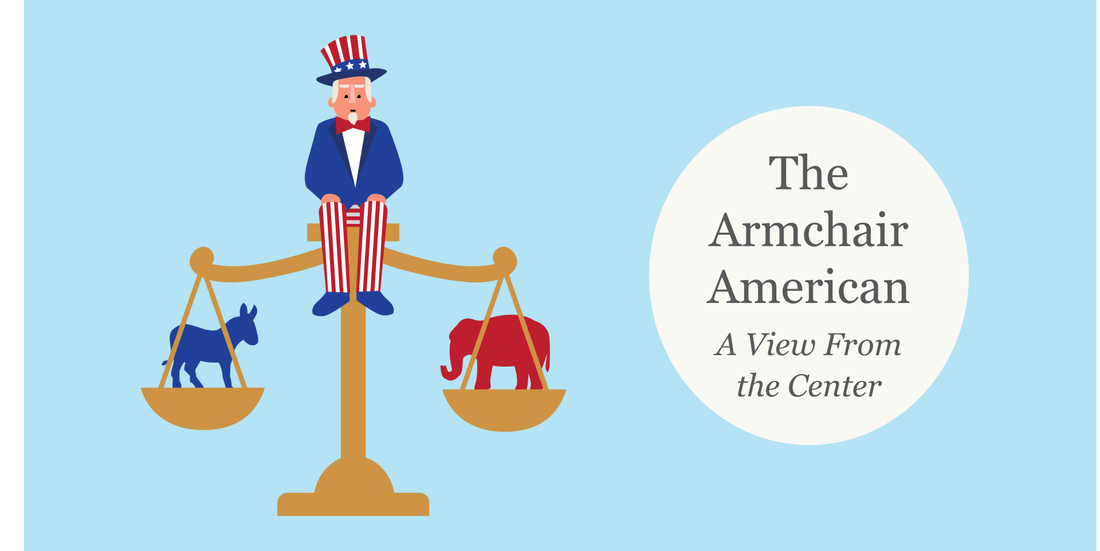
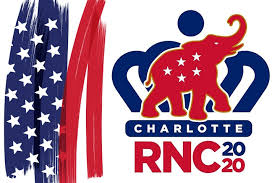
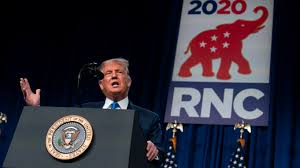
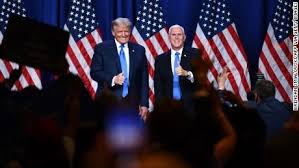



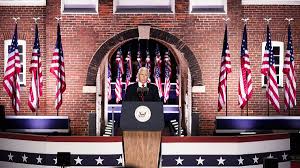
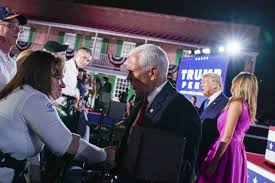
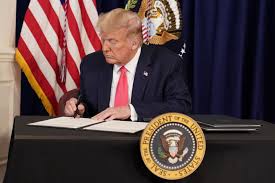
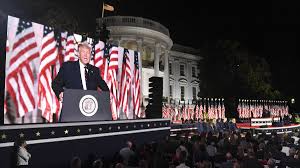
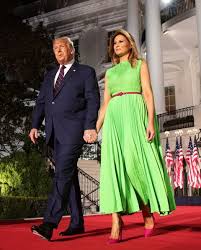


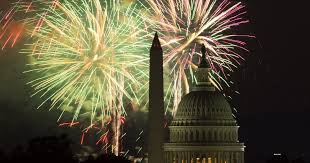


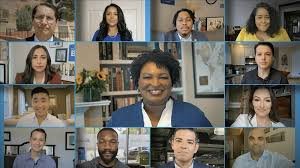
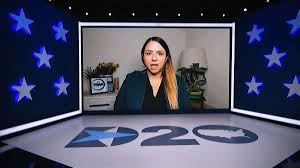
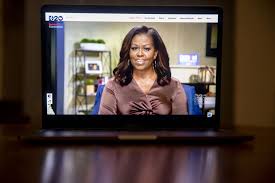
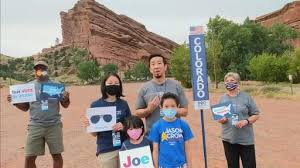


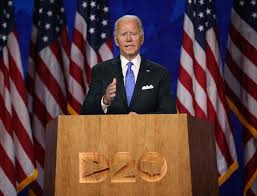

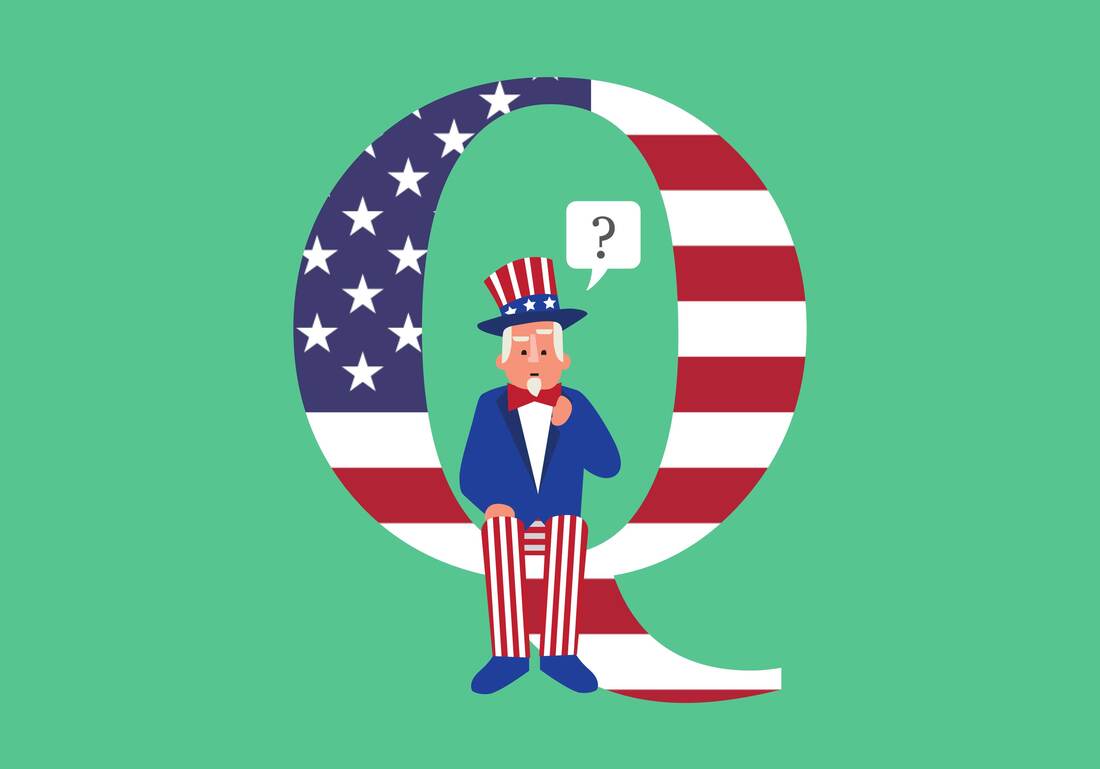
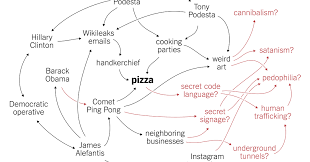
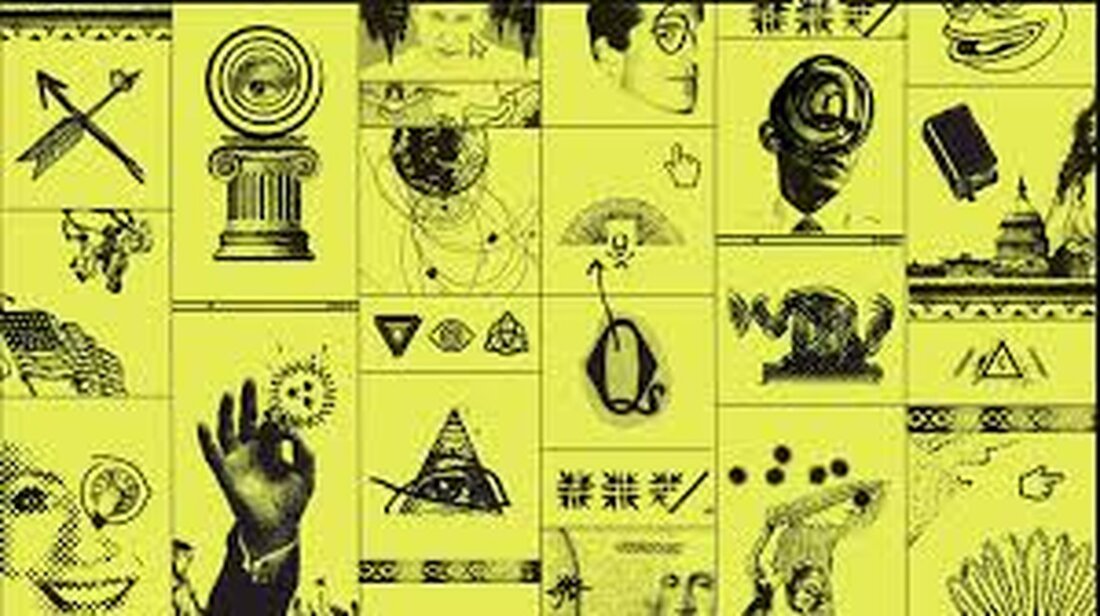
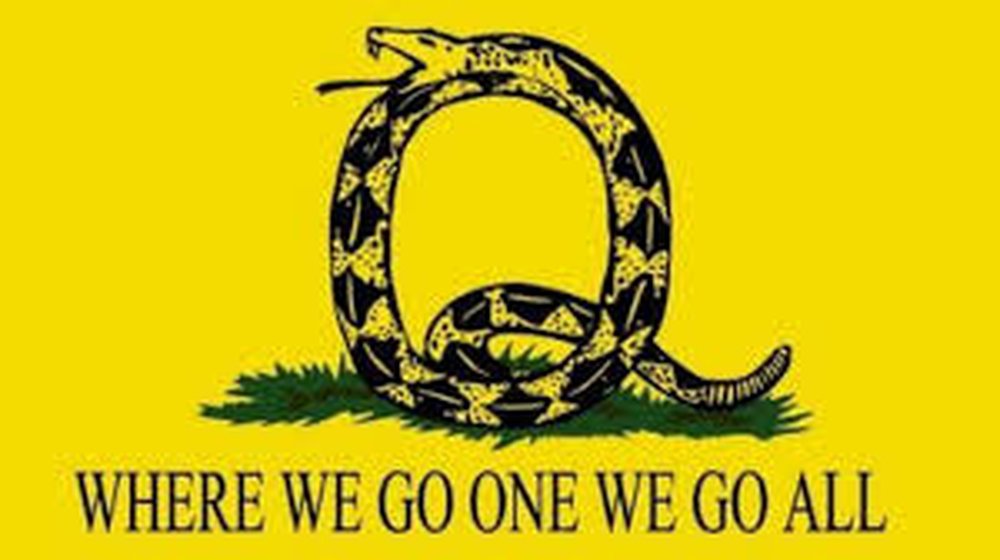
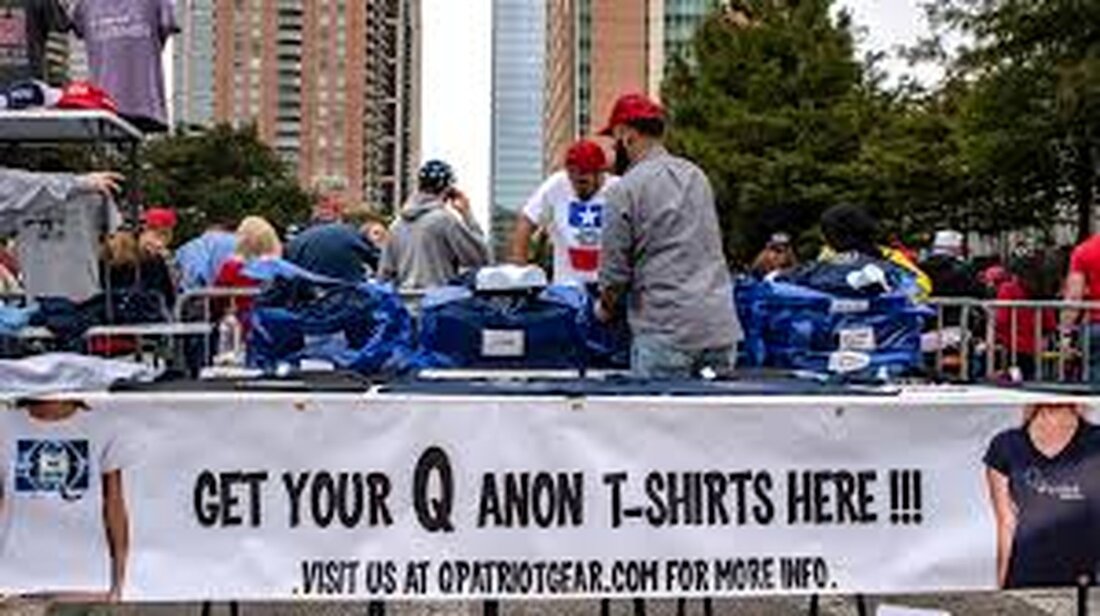

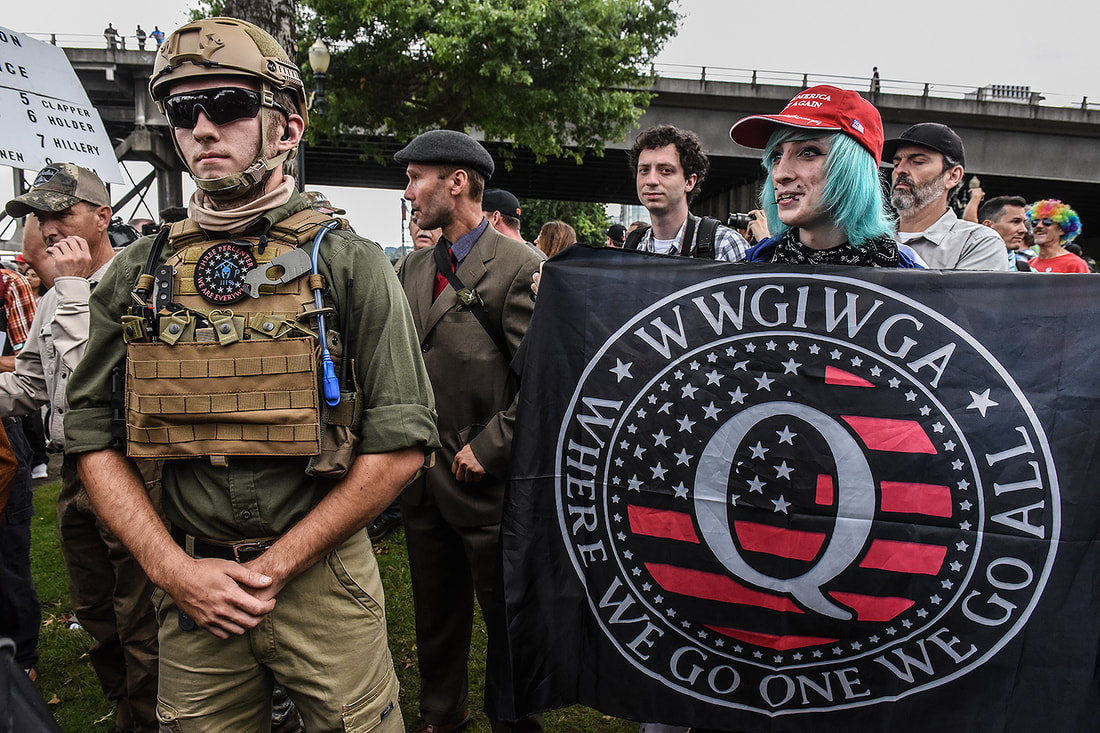
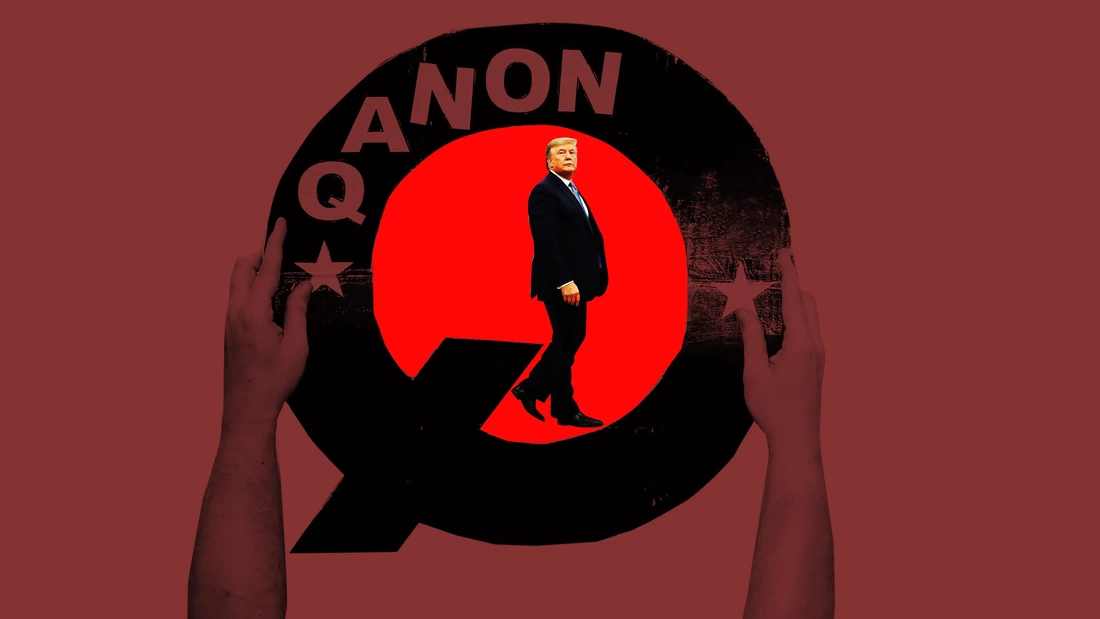
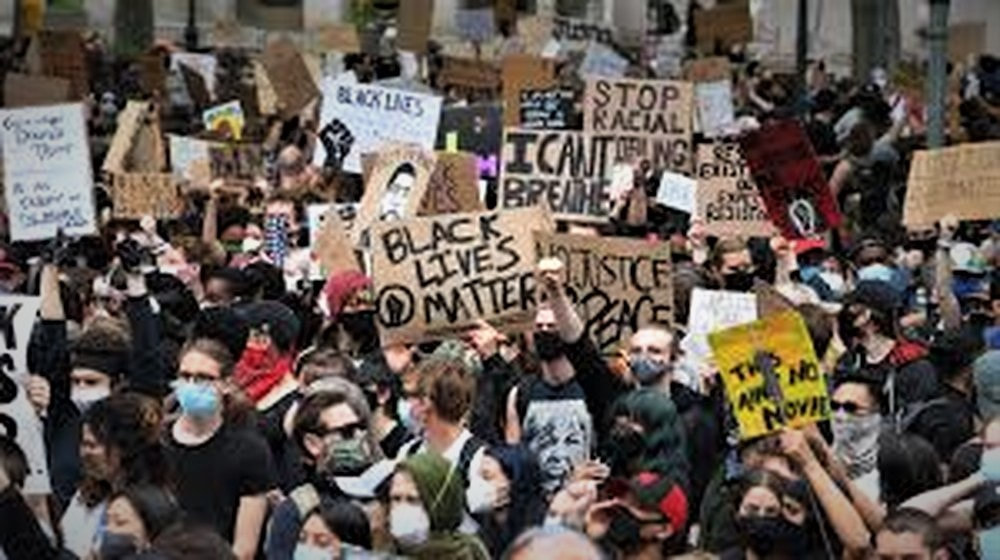
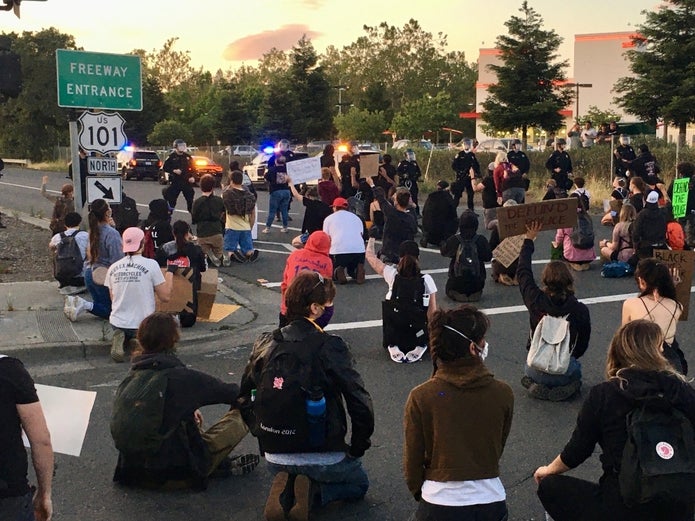
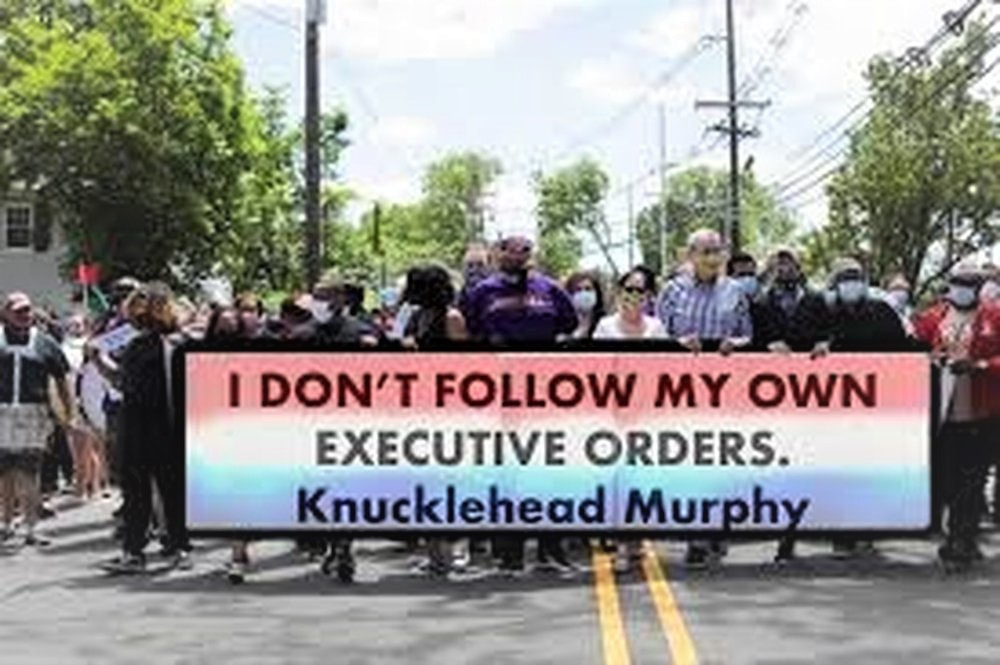
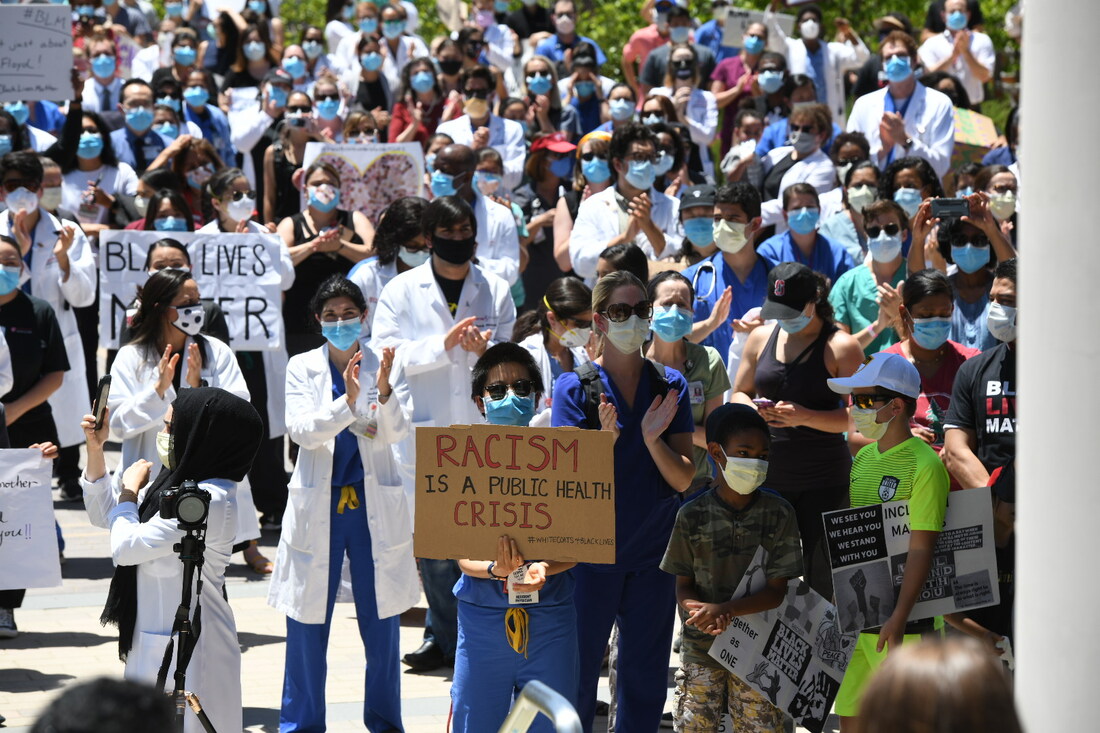
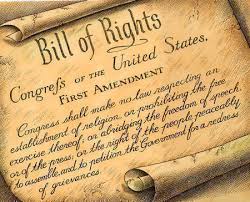
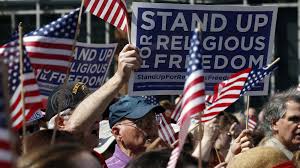
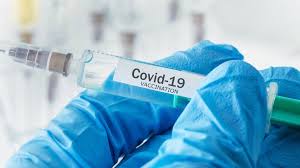

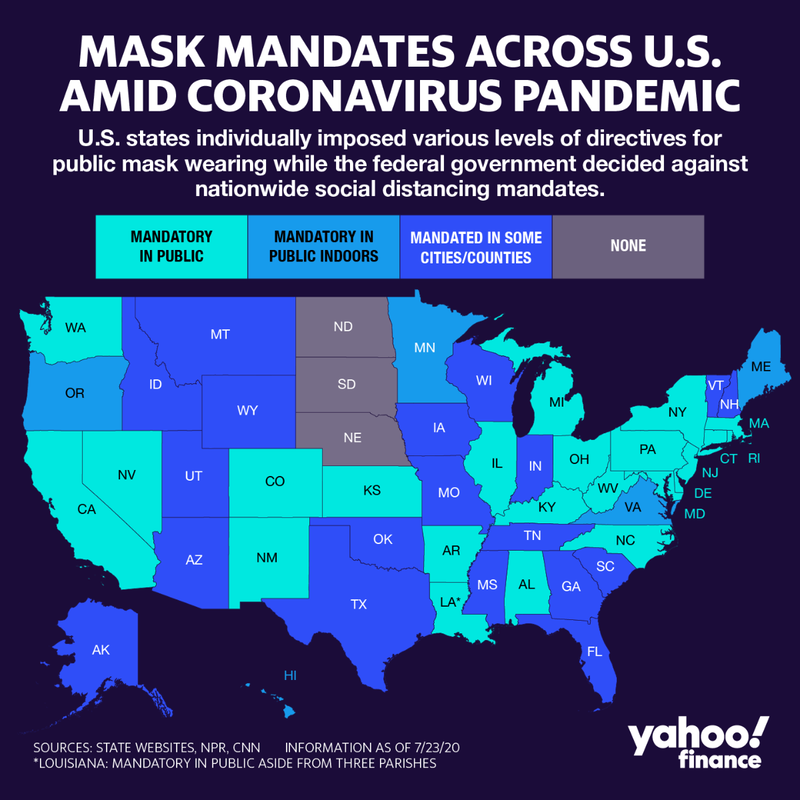
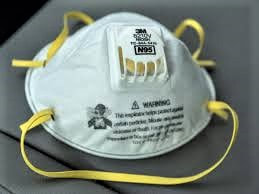


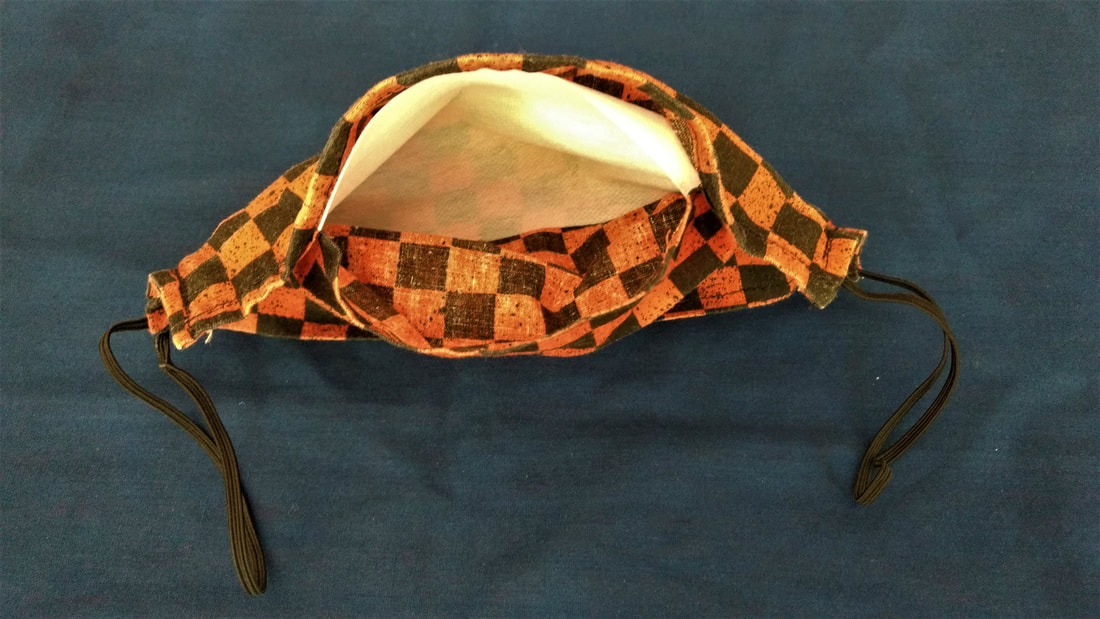
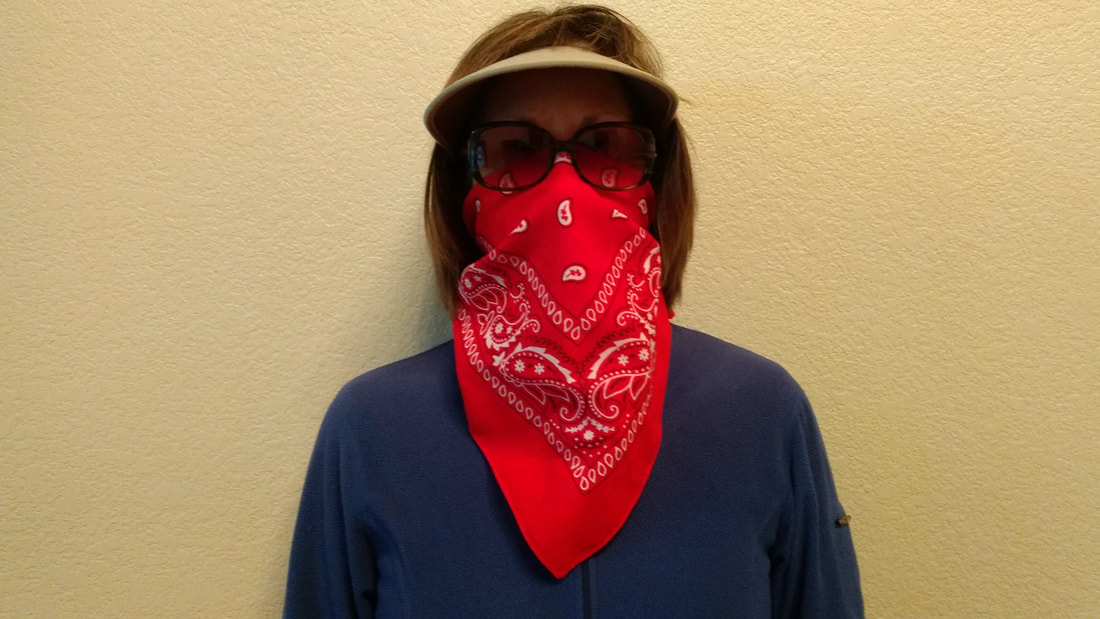
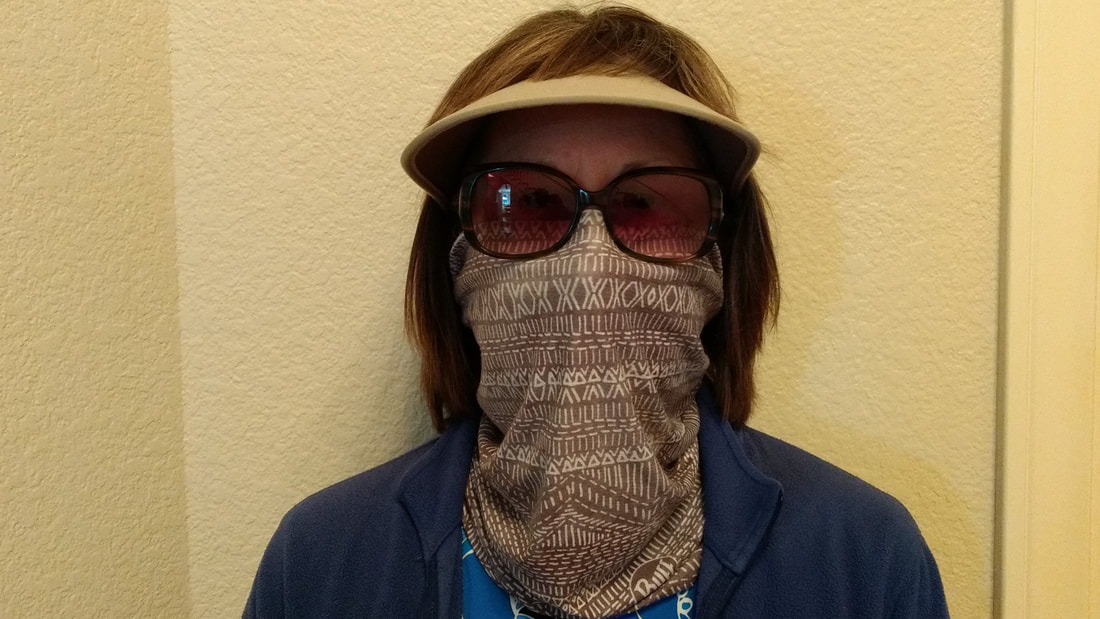
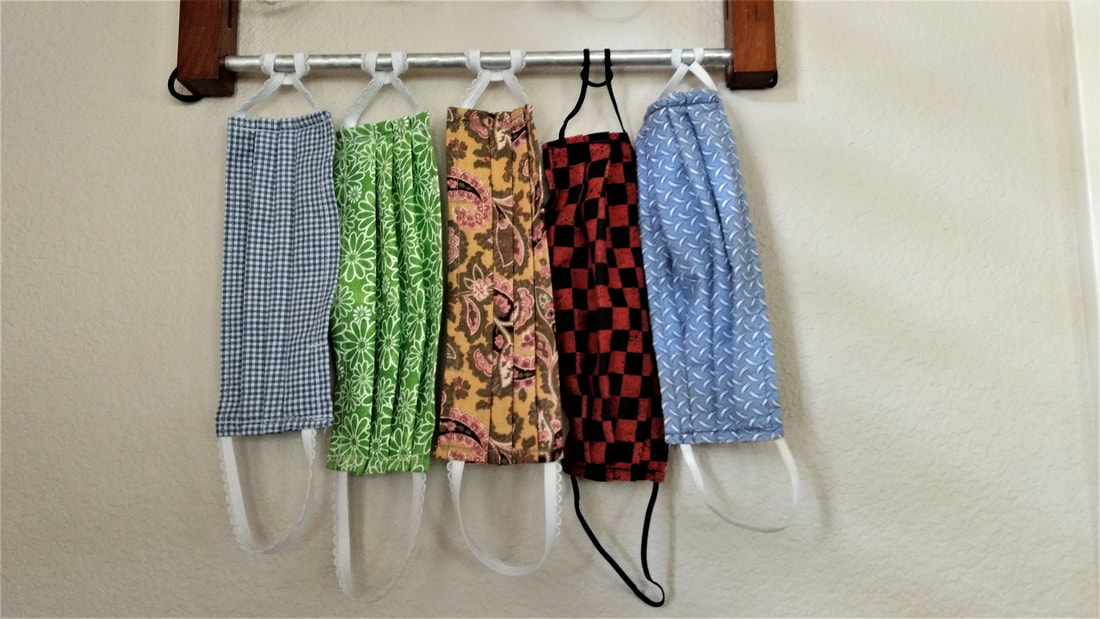

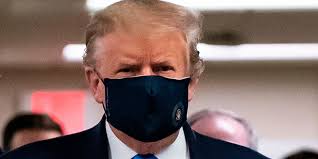
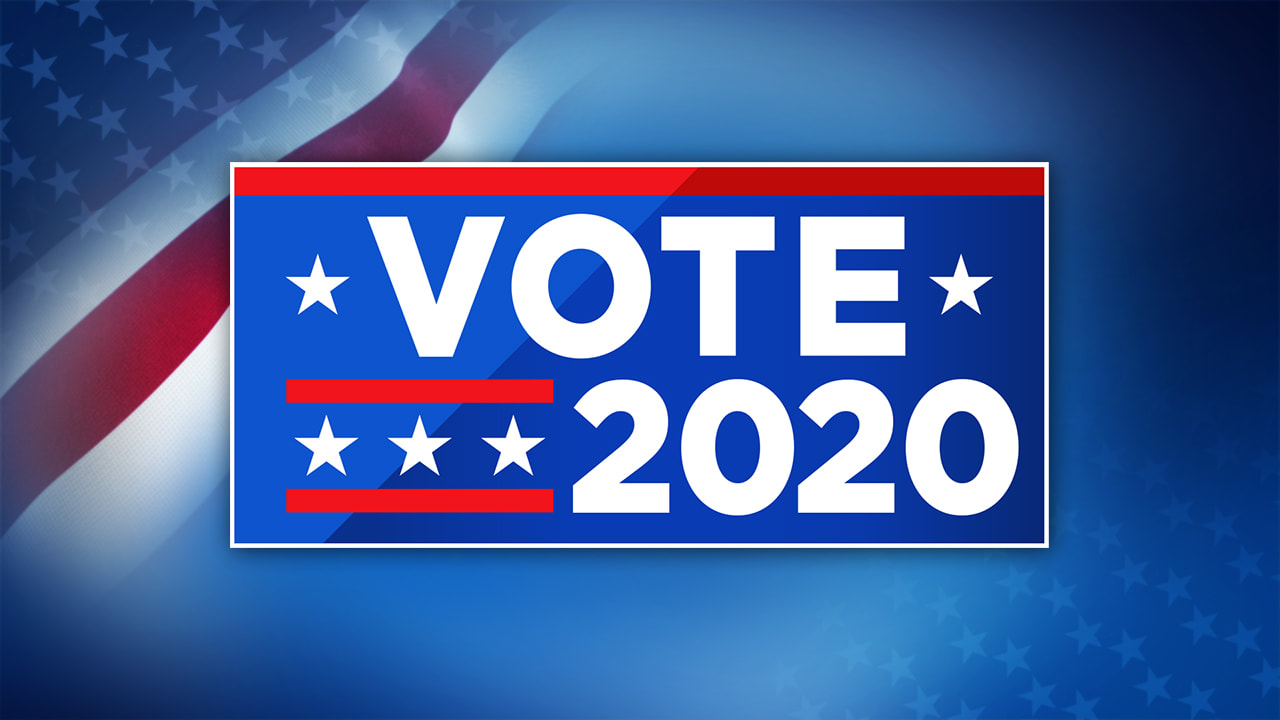


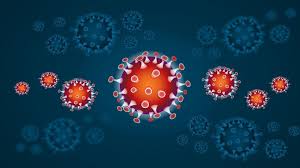
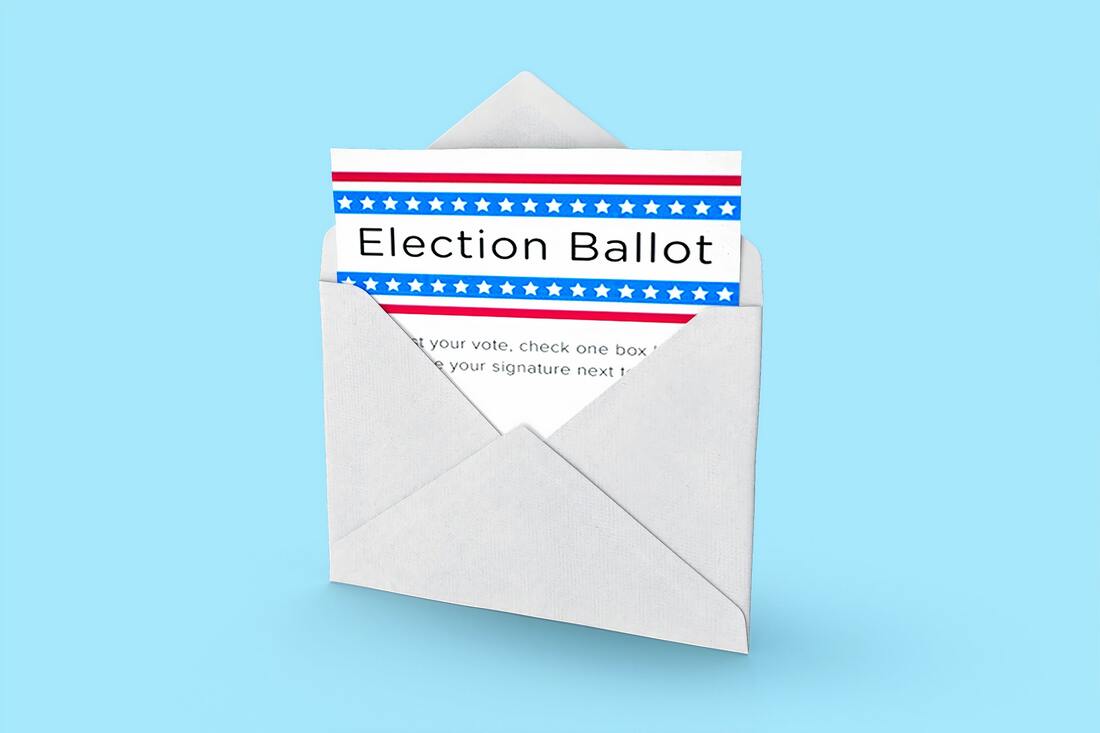
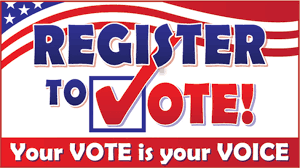
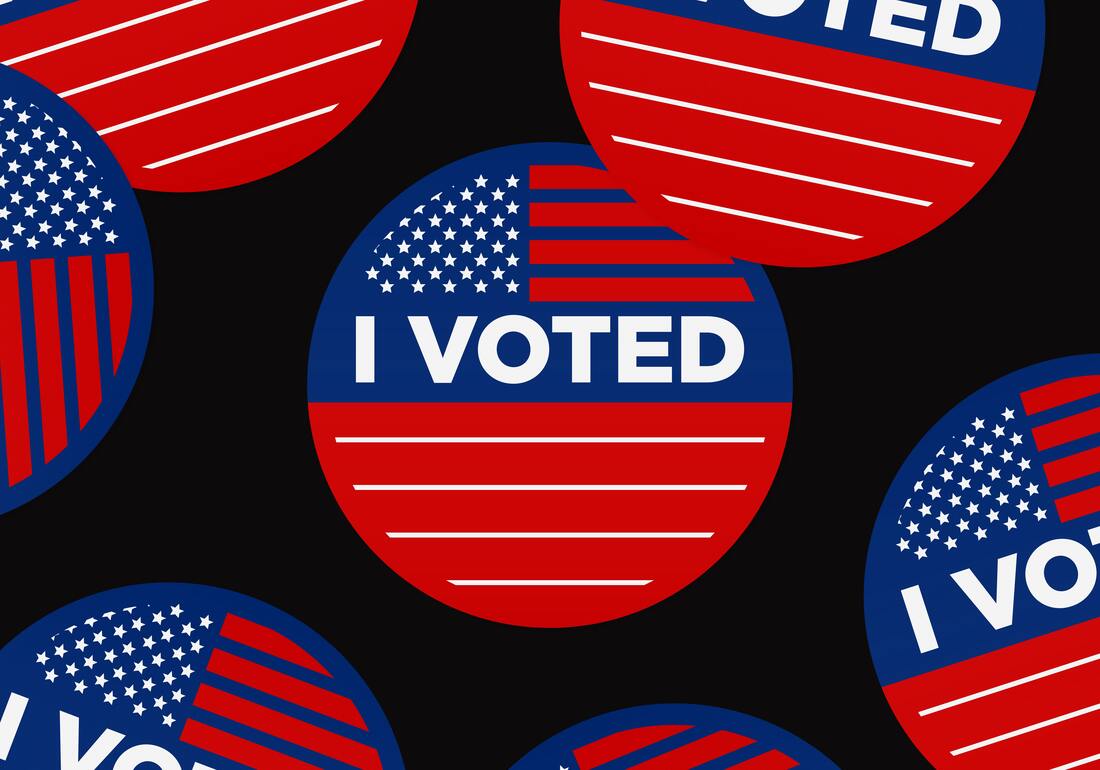
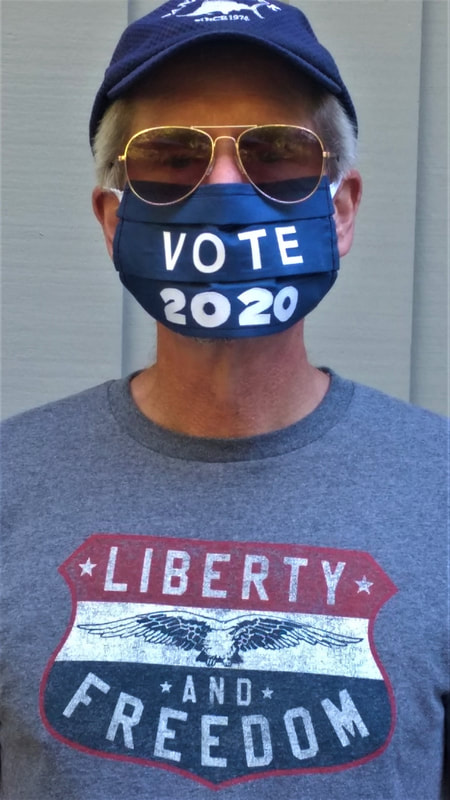
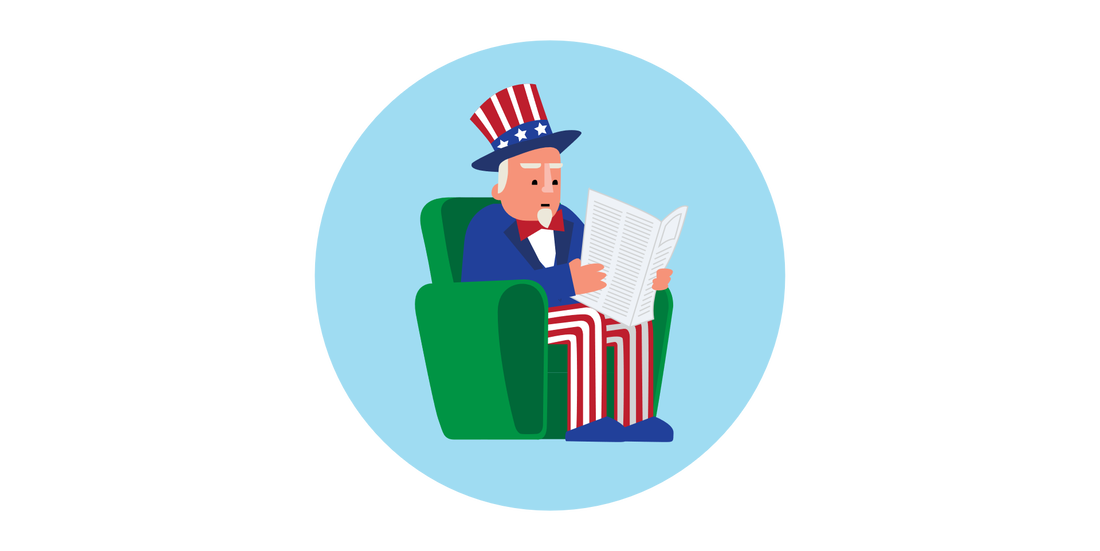
 RSS Feed
RSS Feed